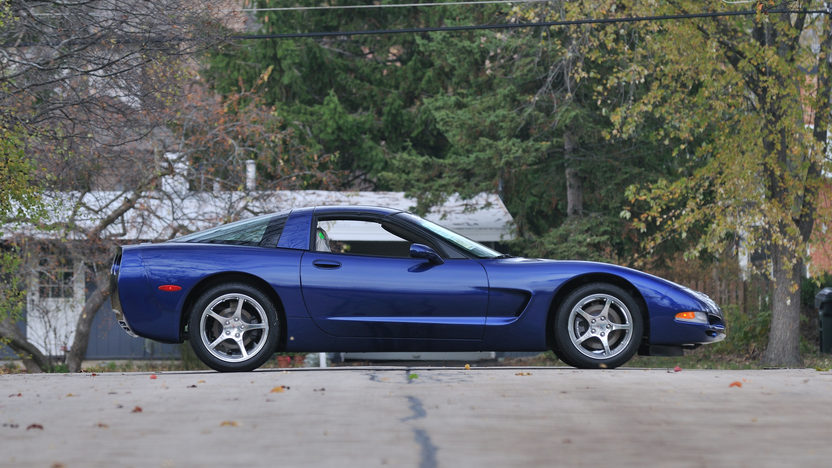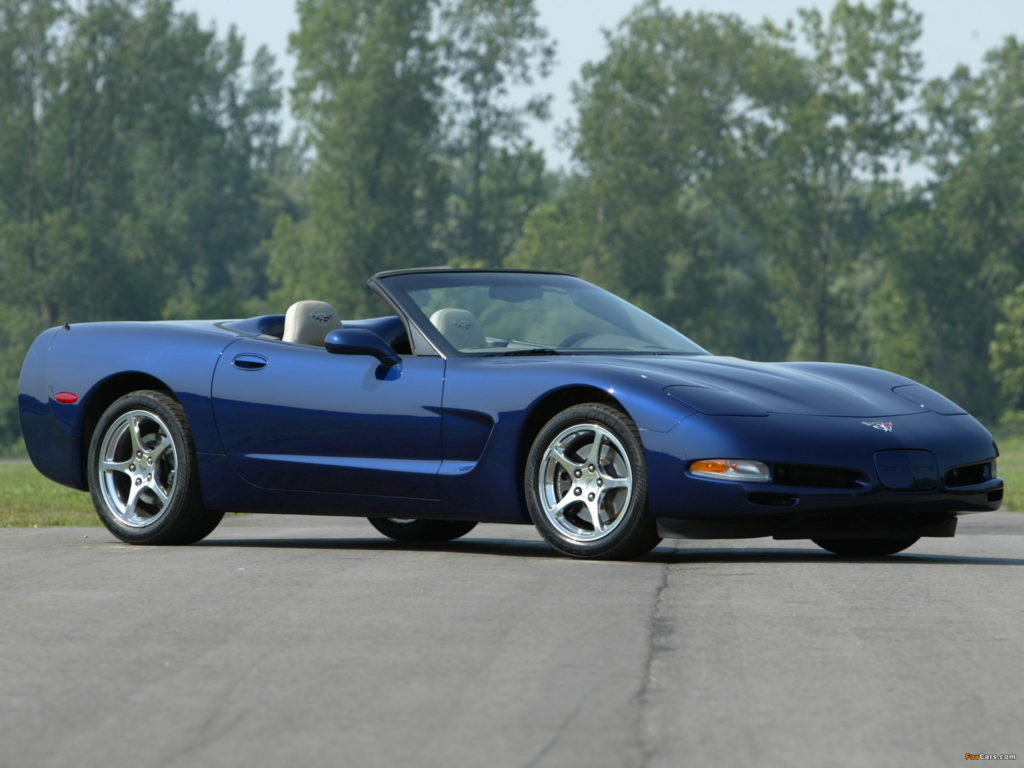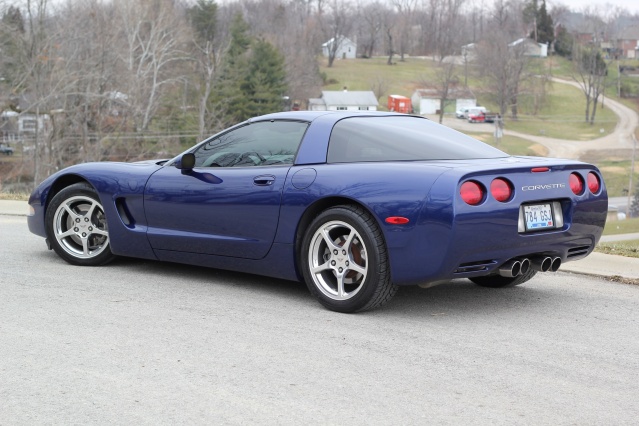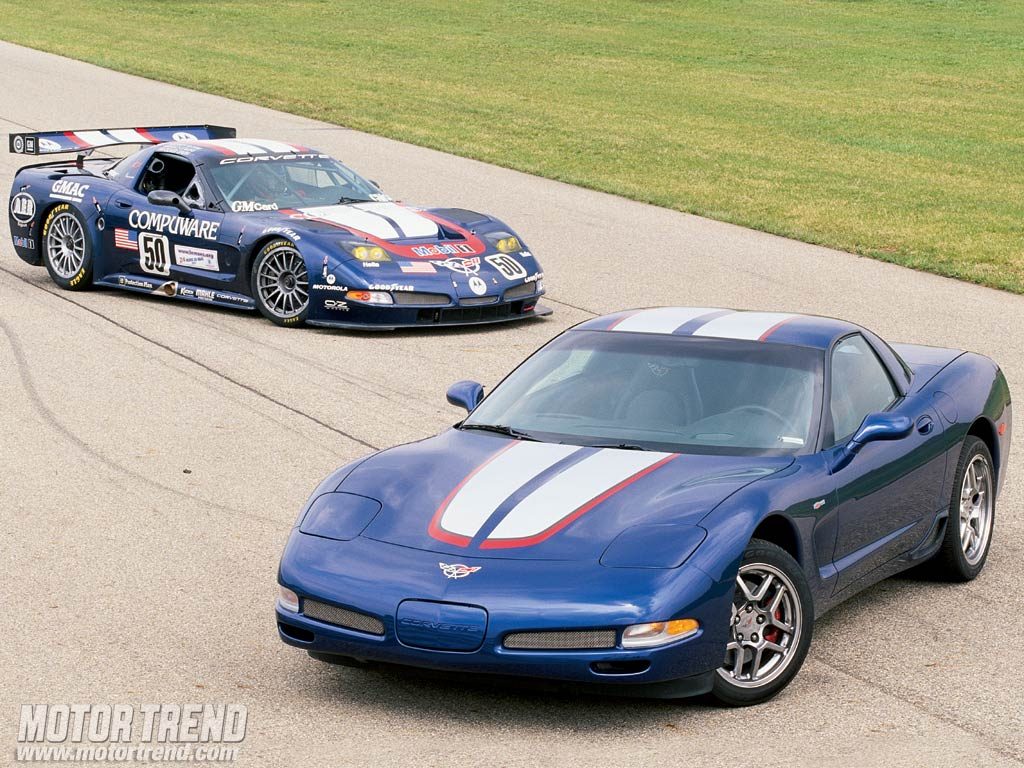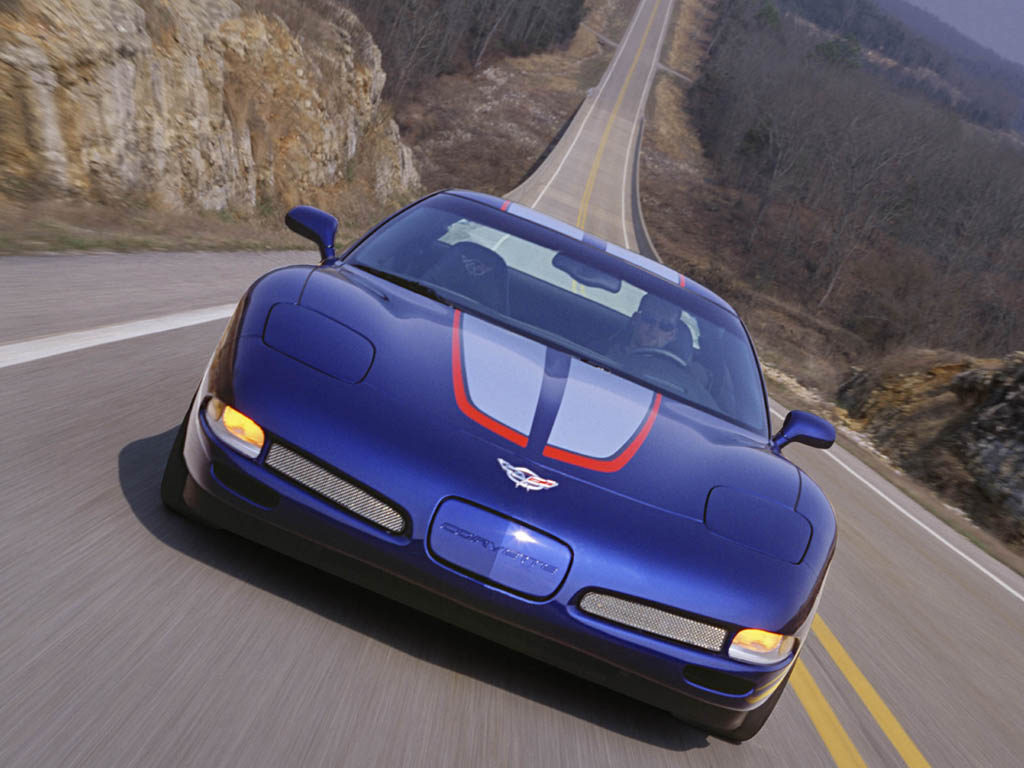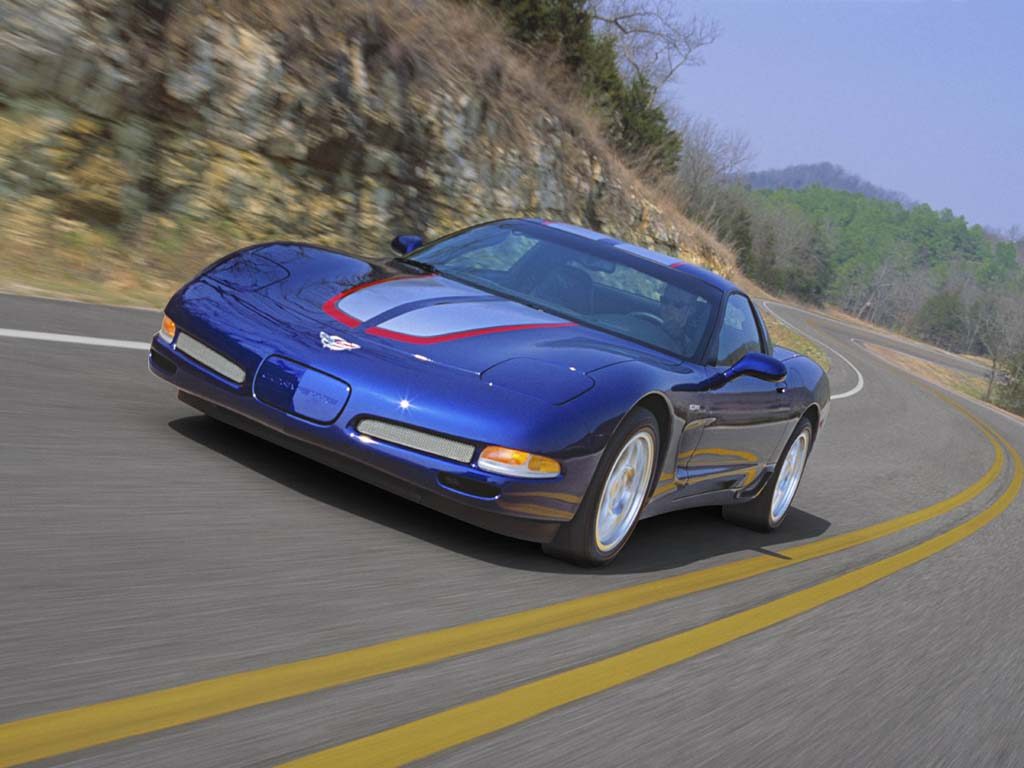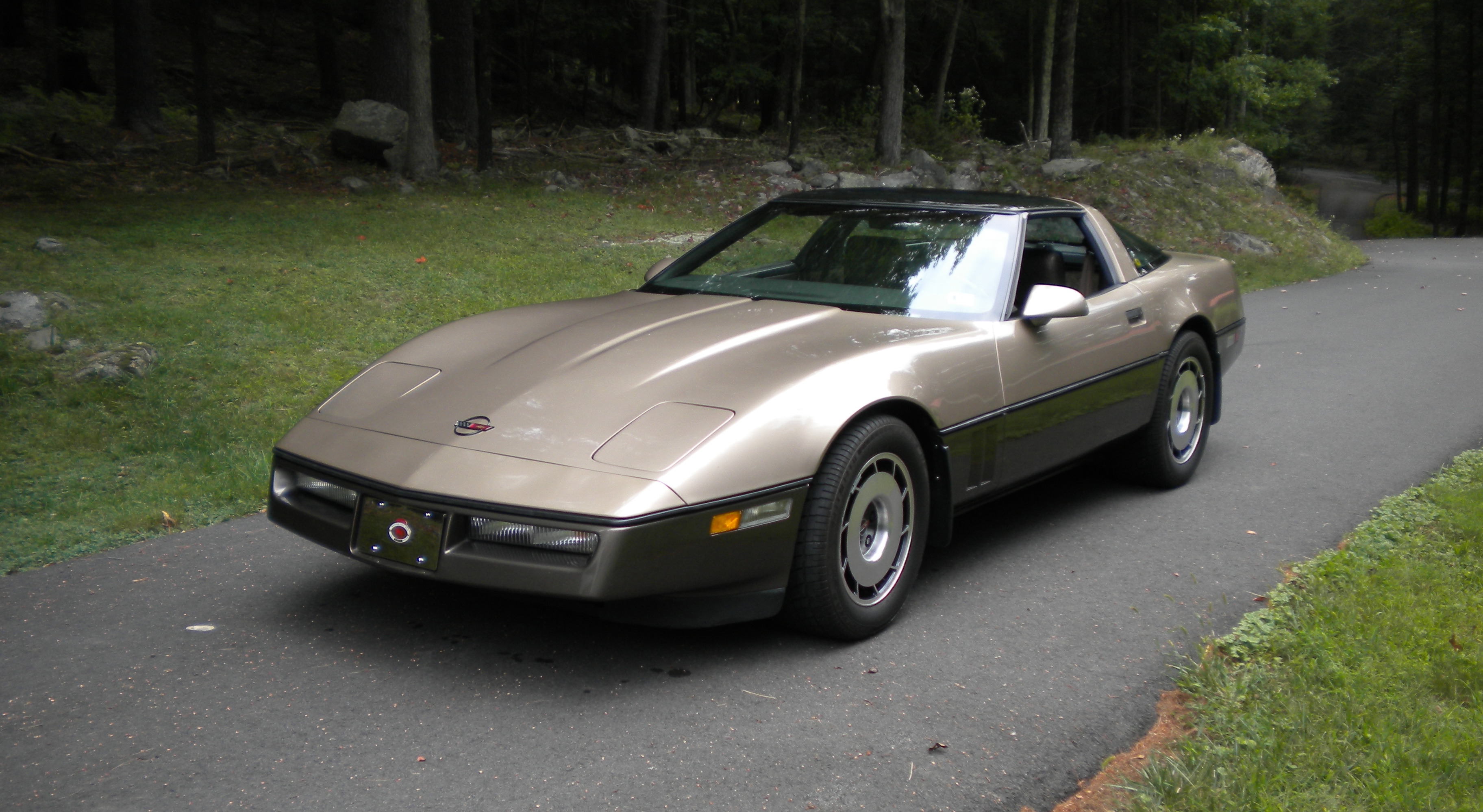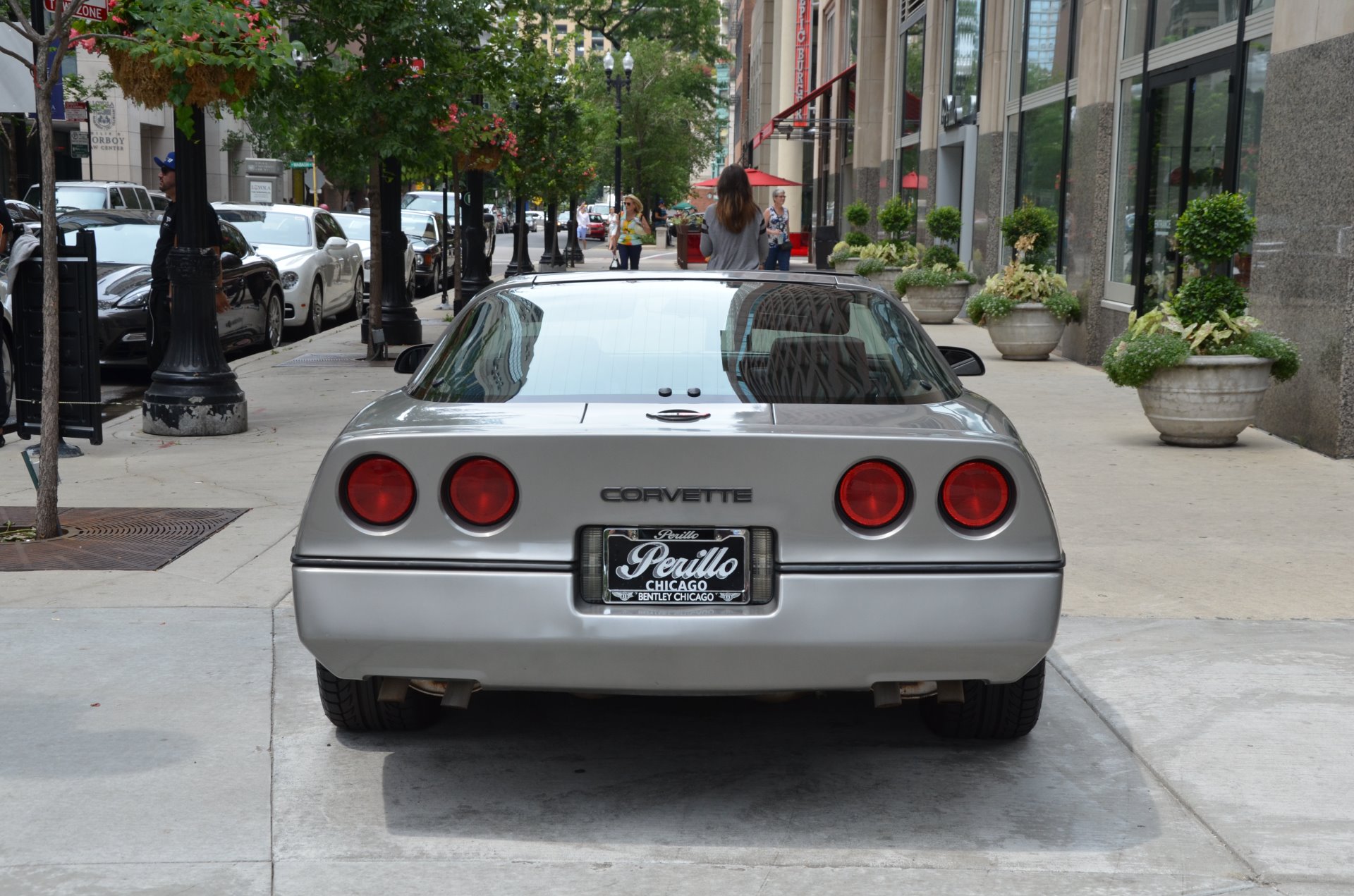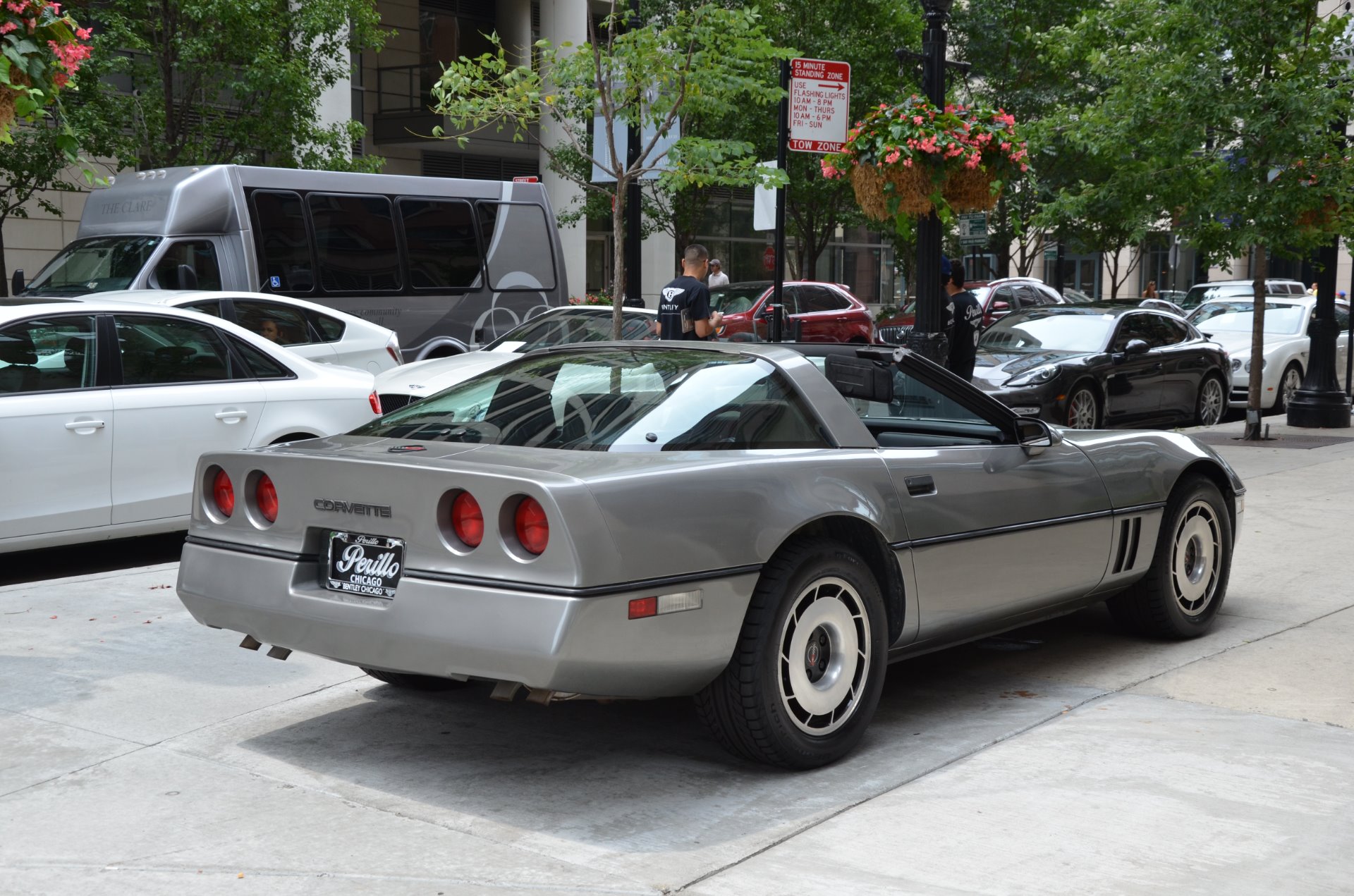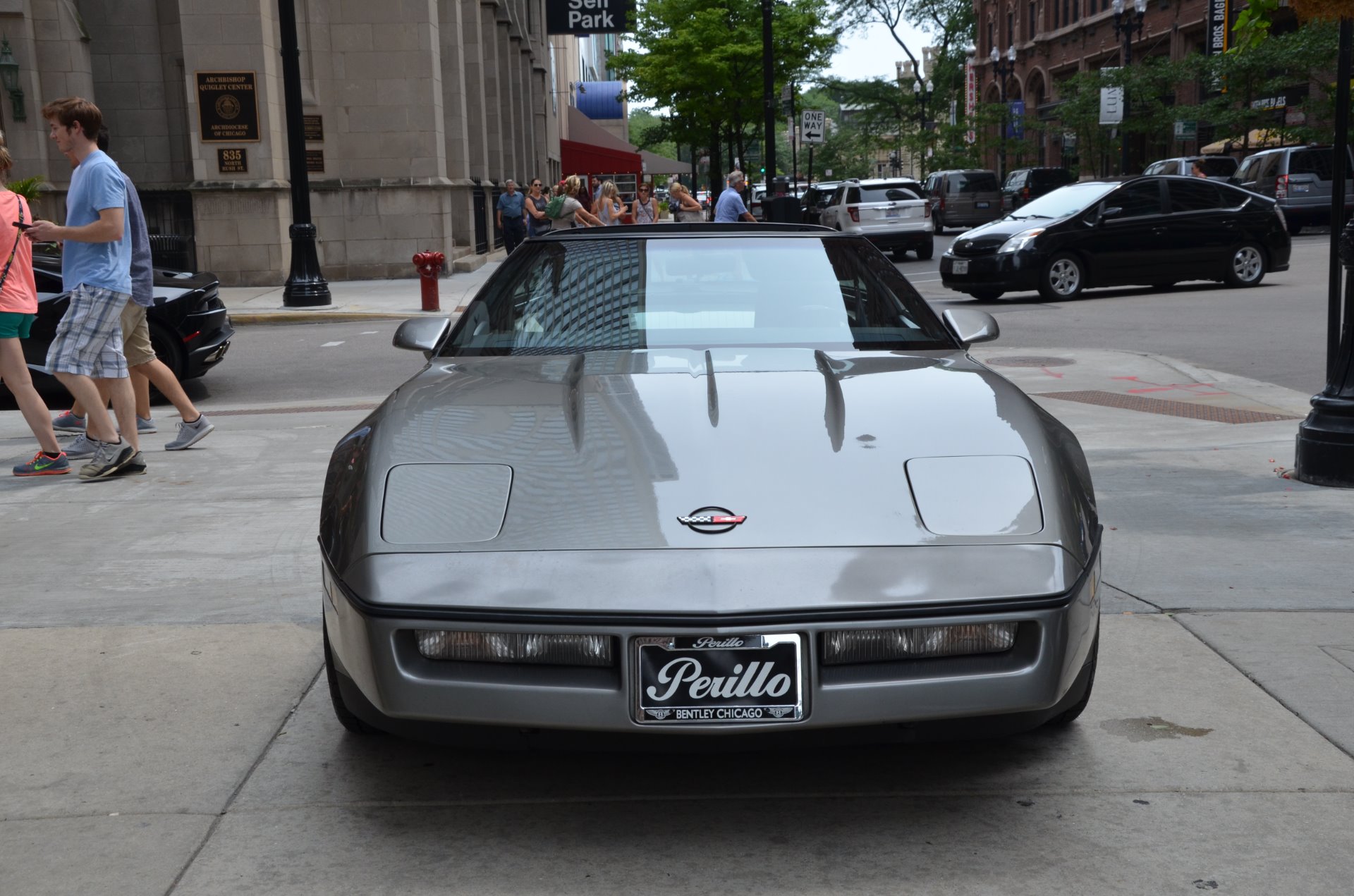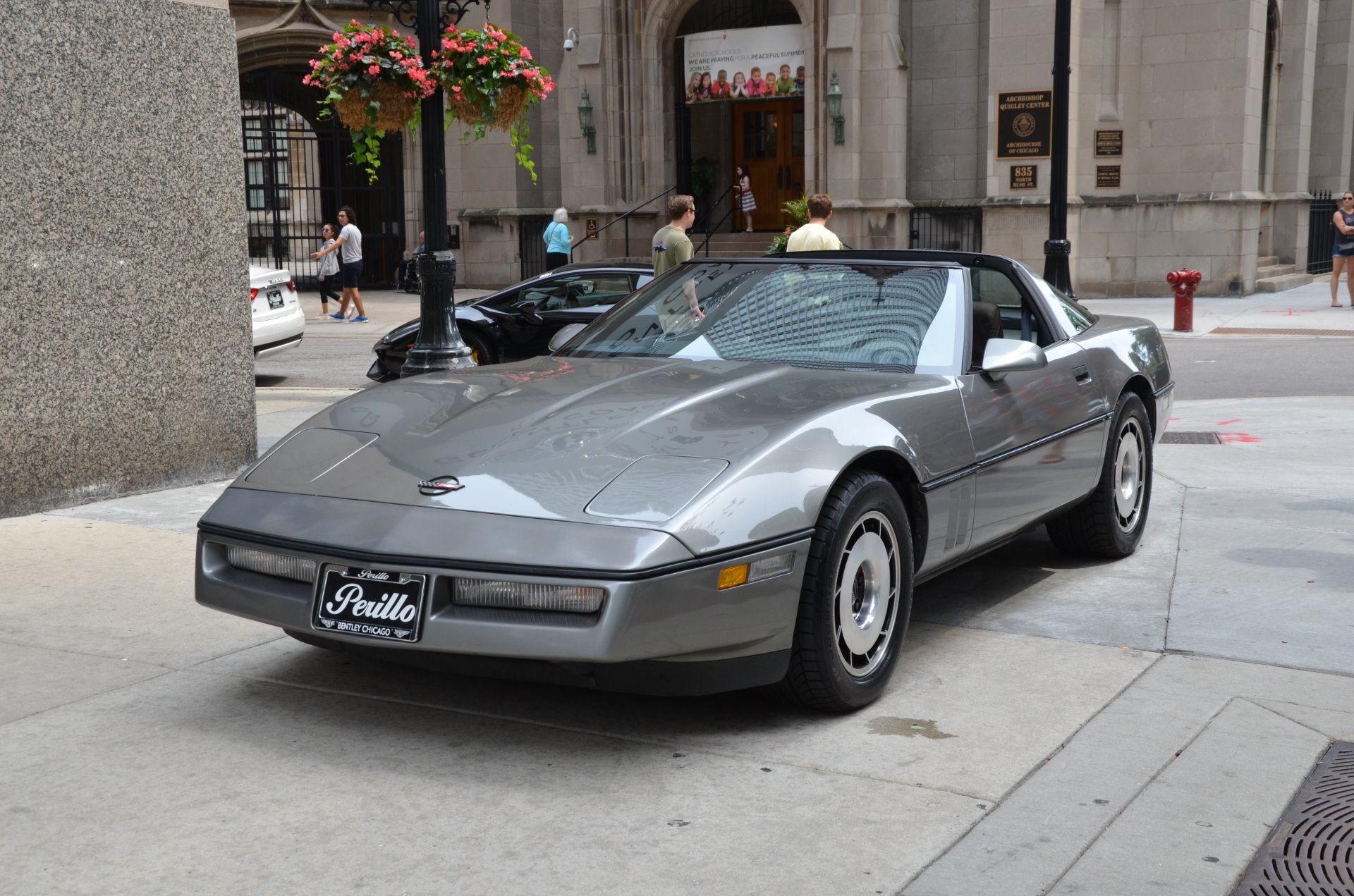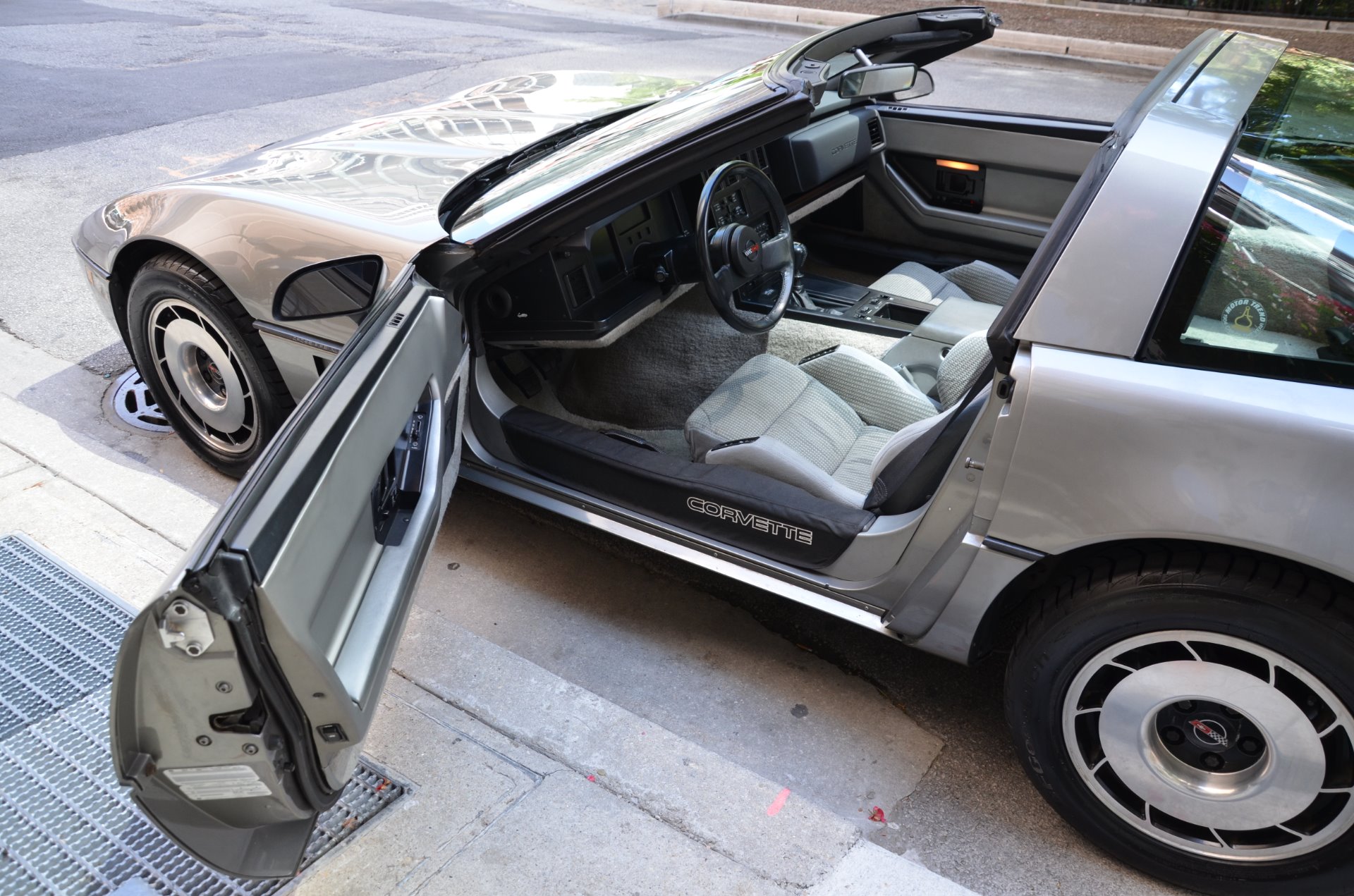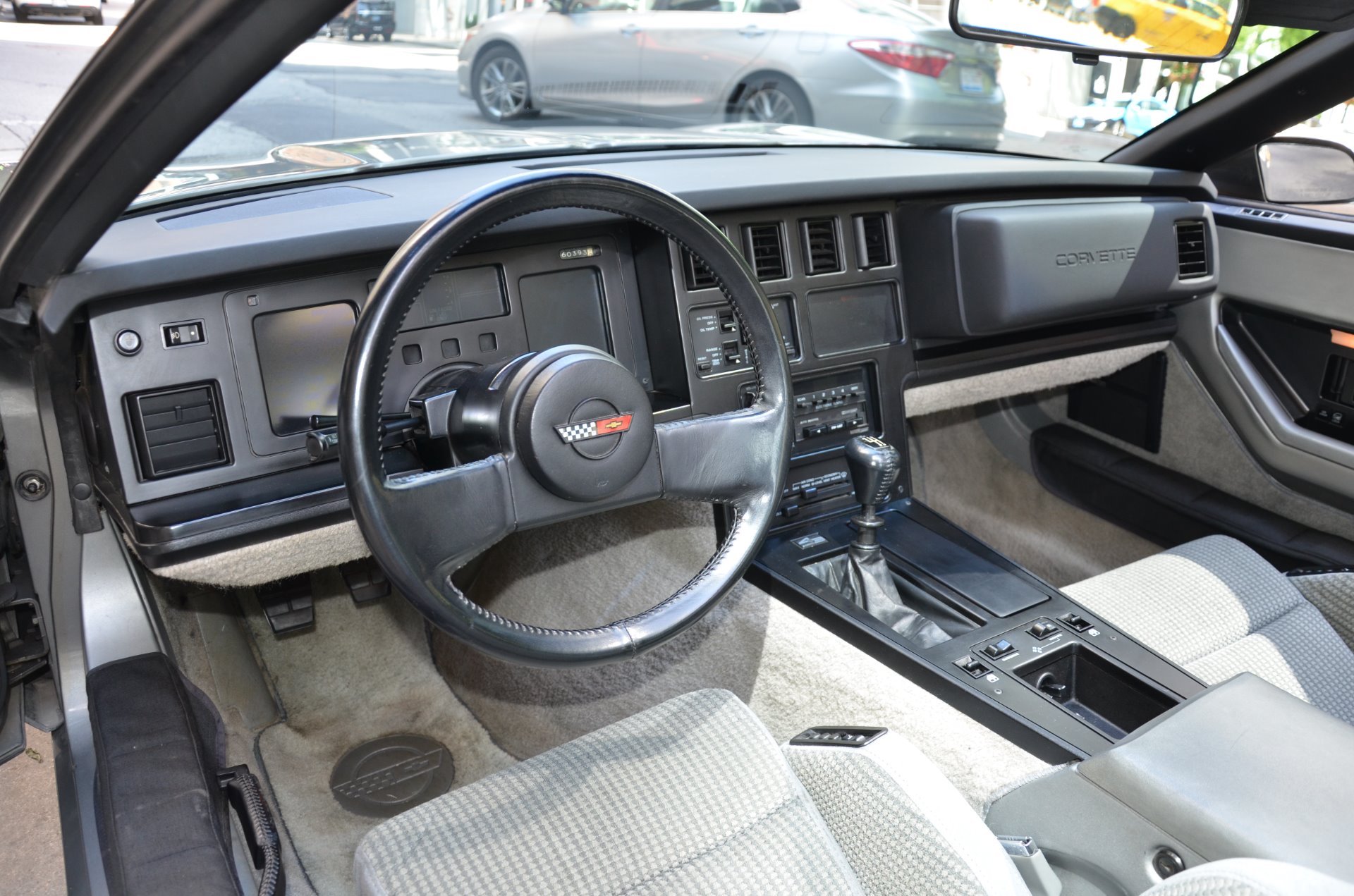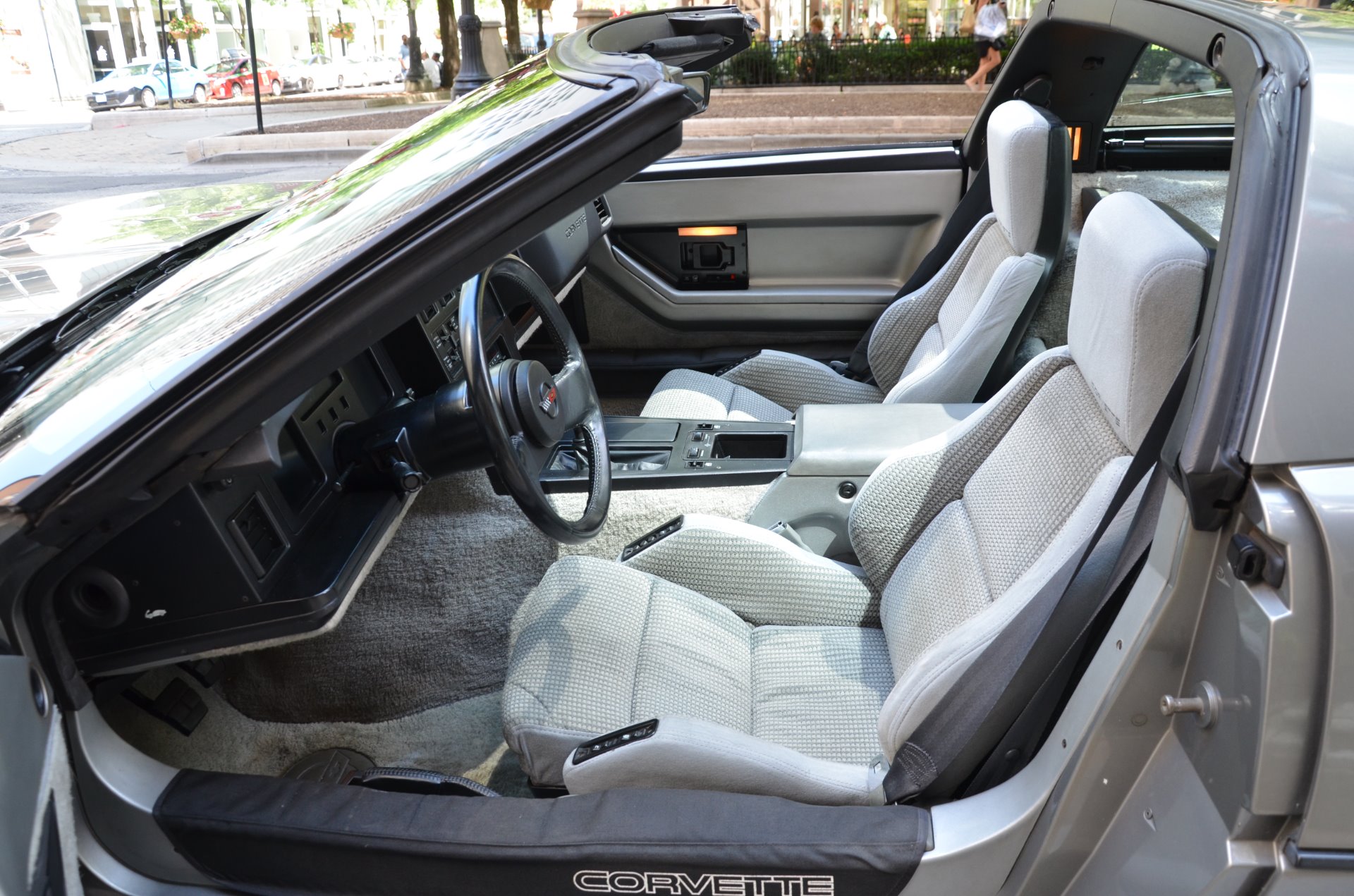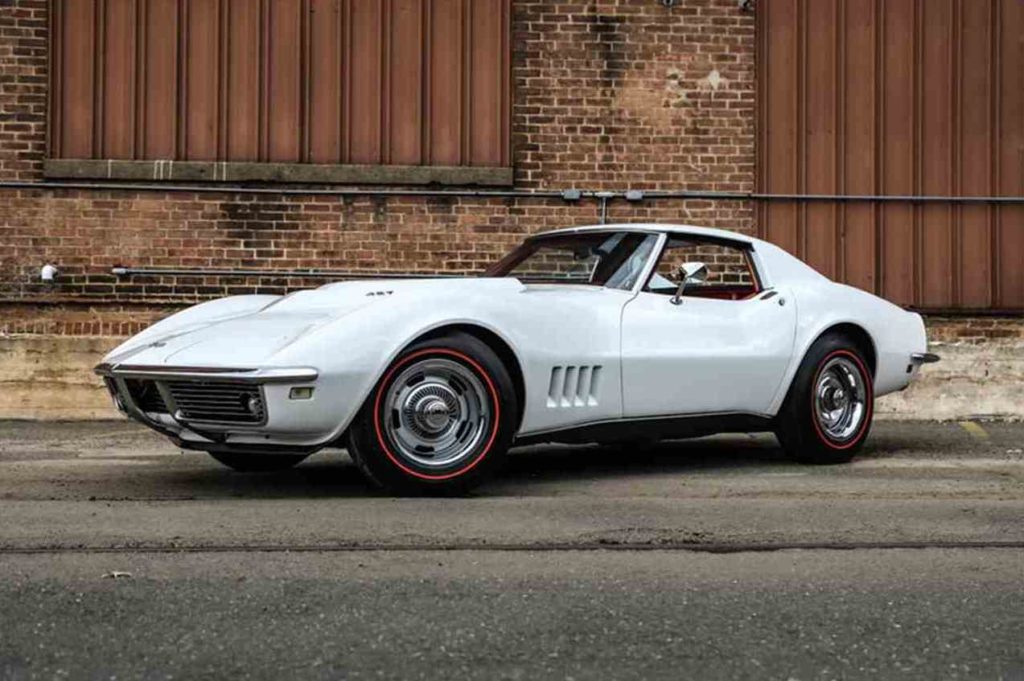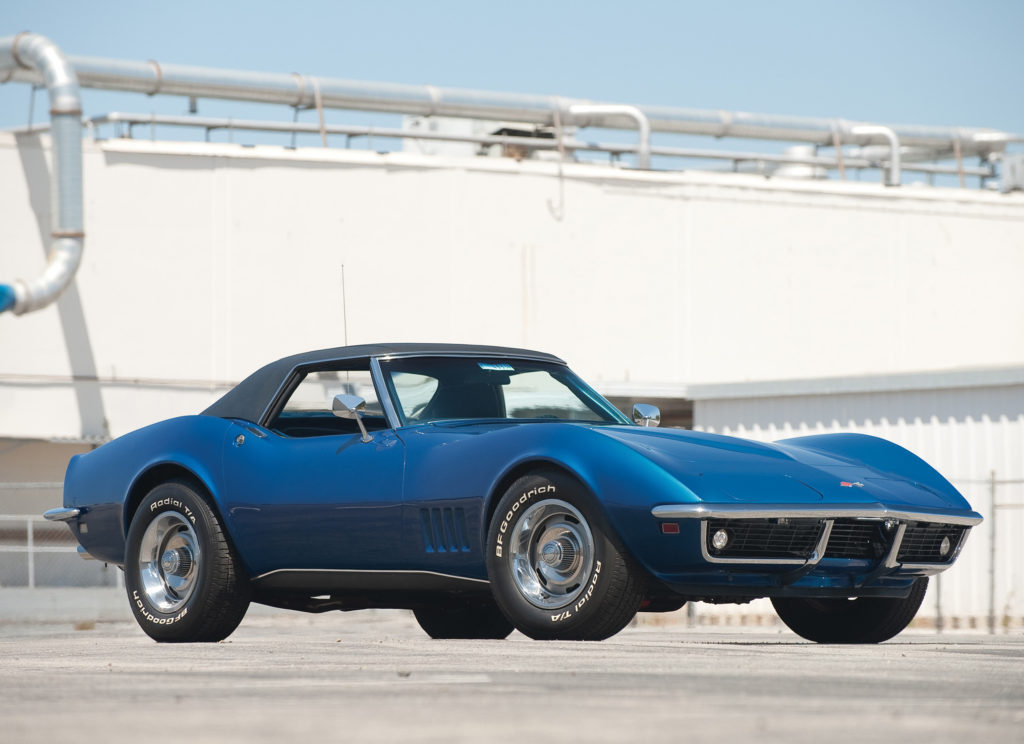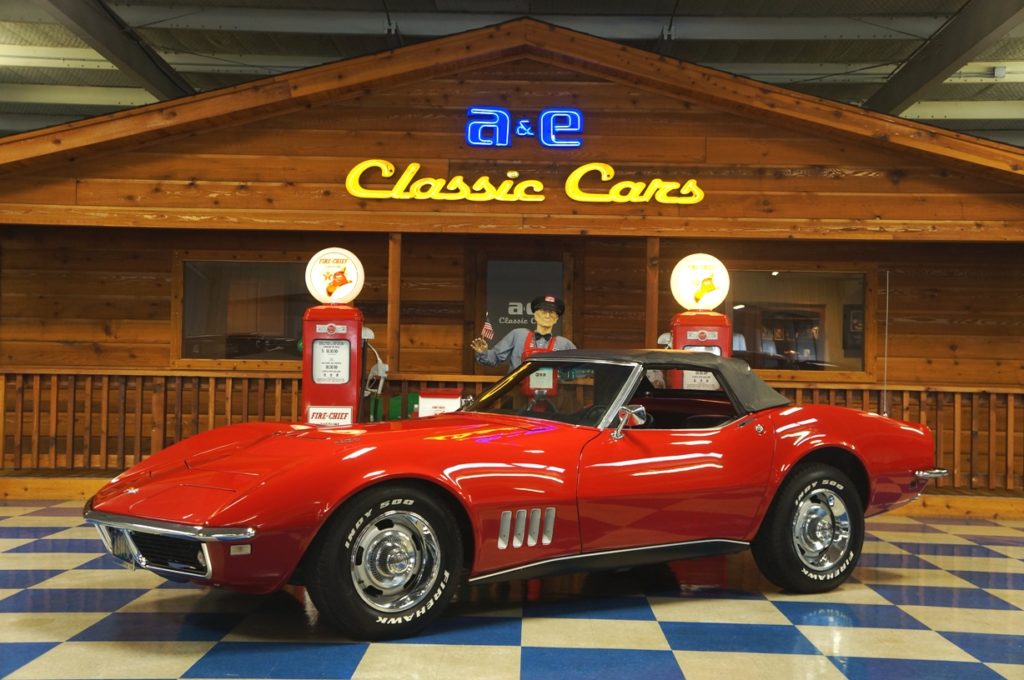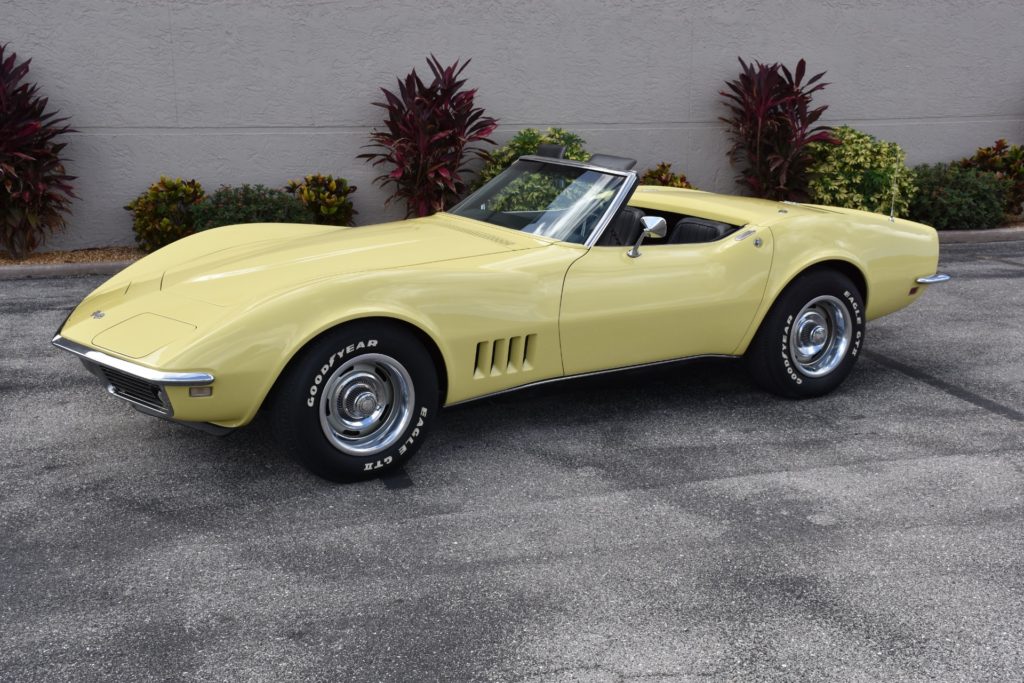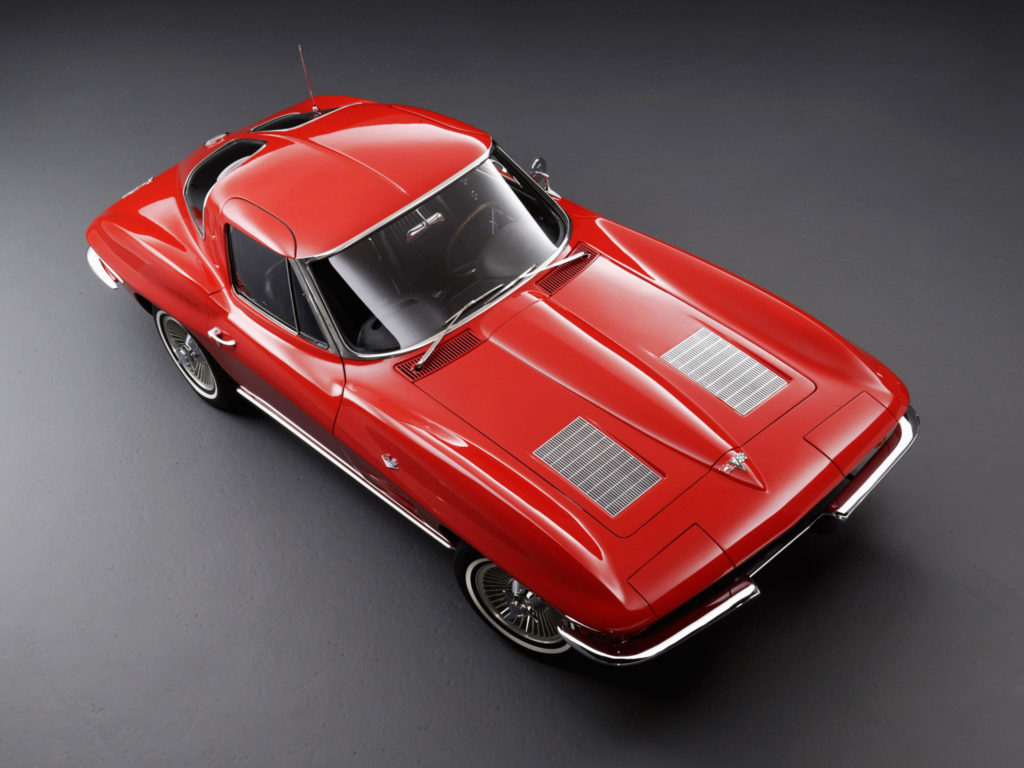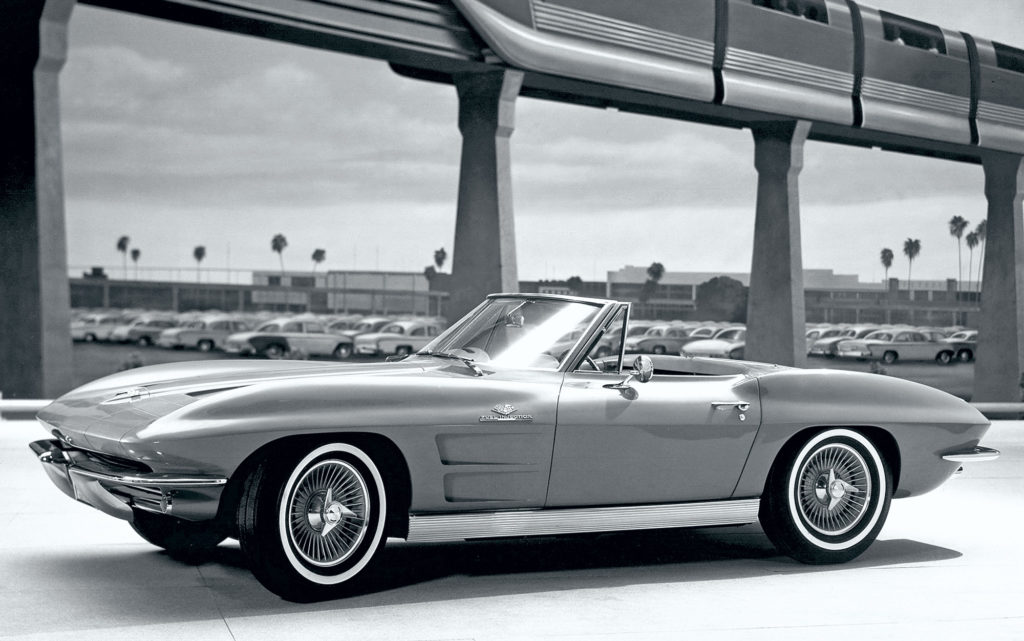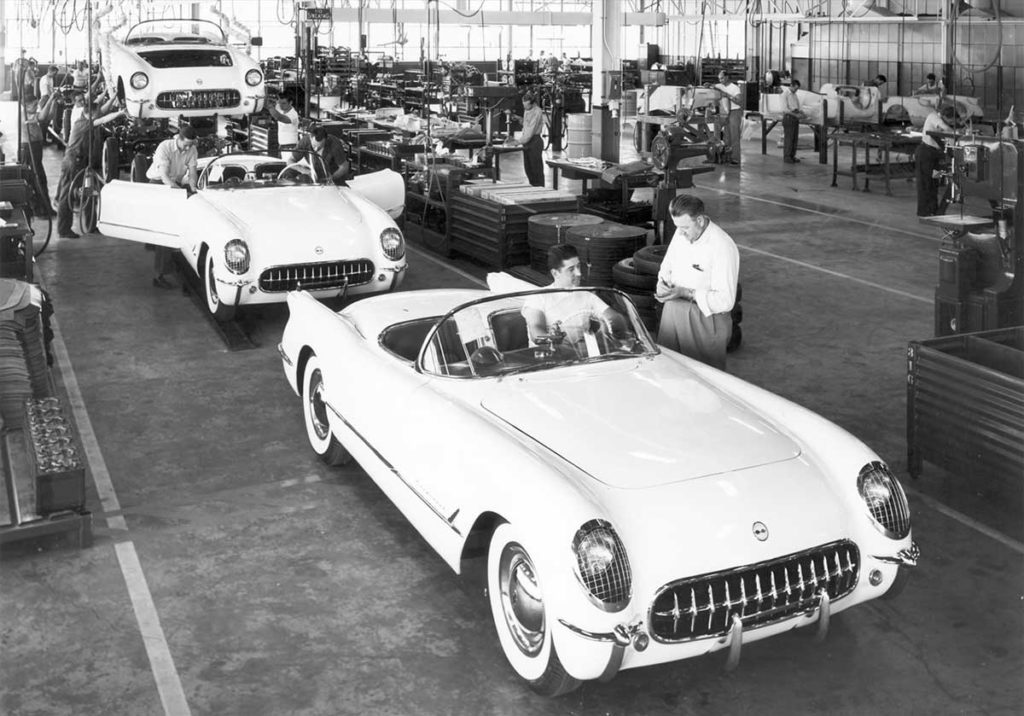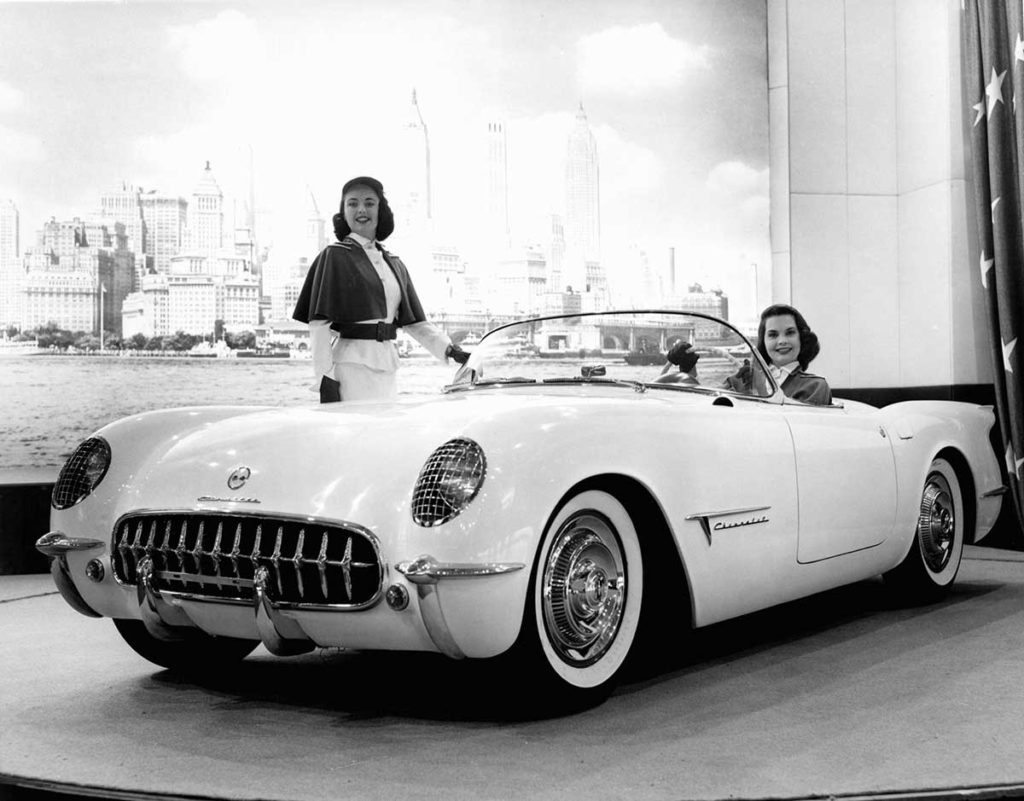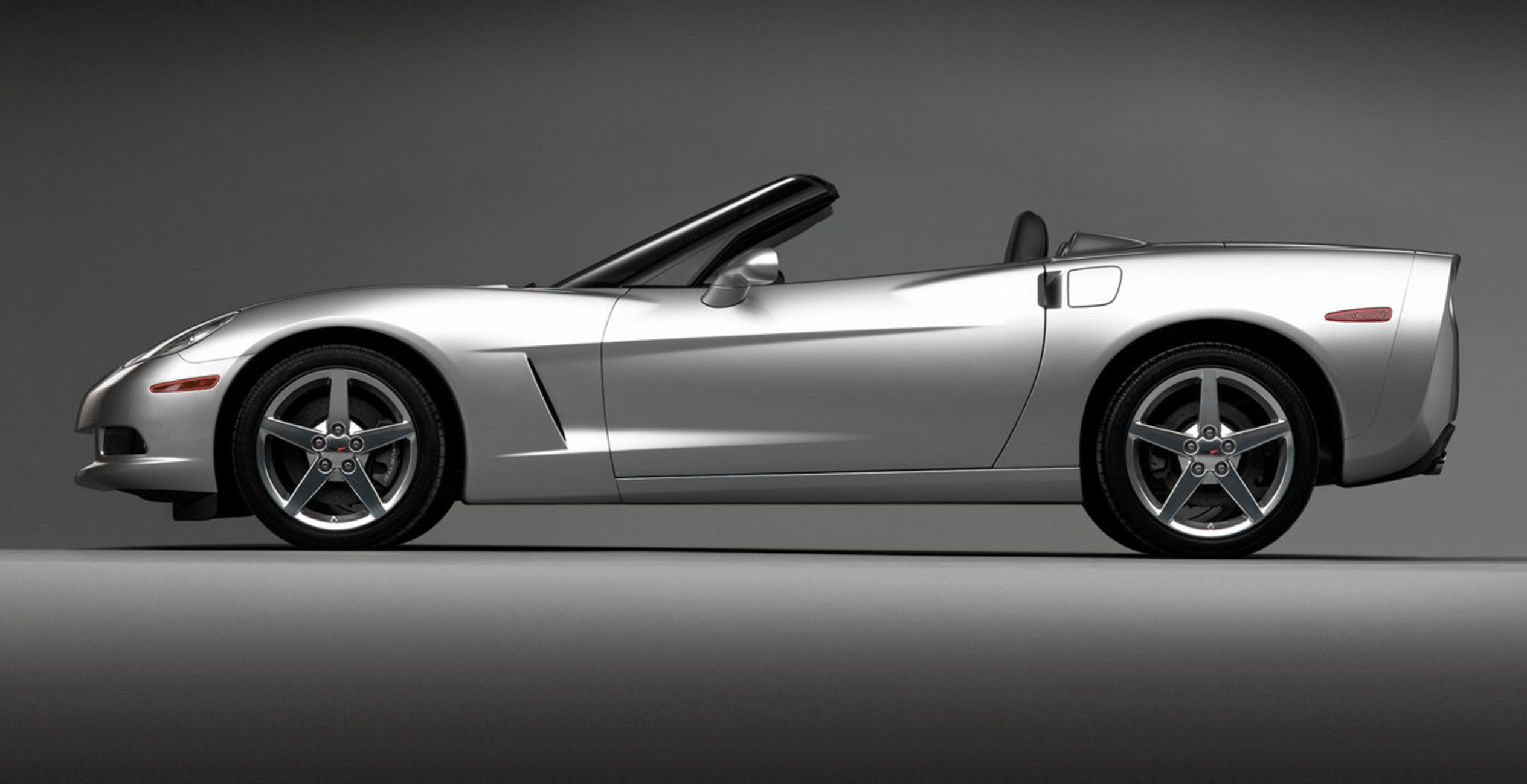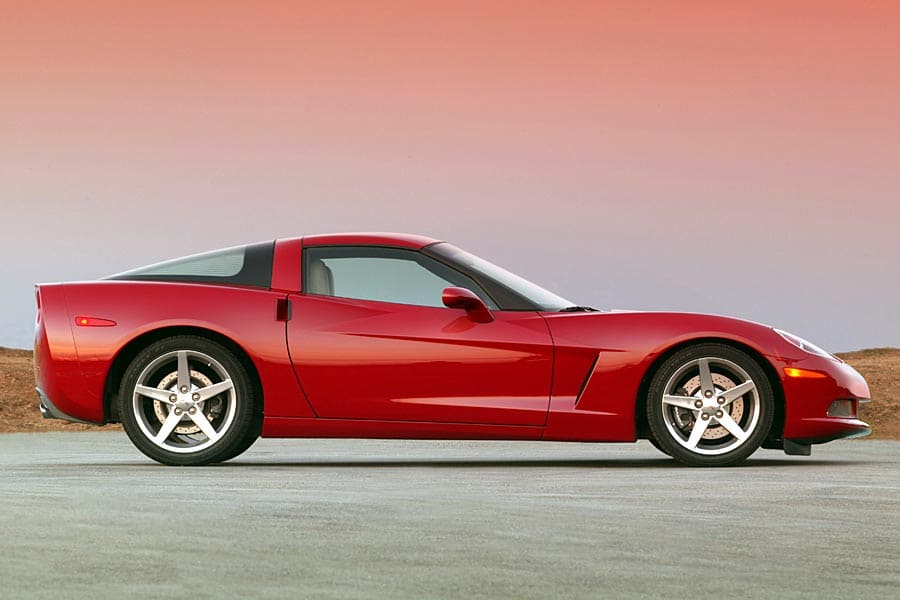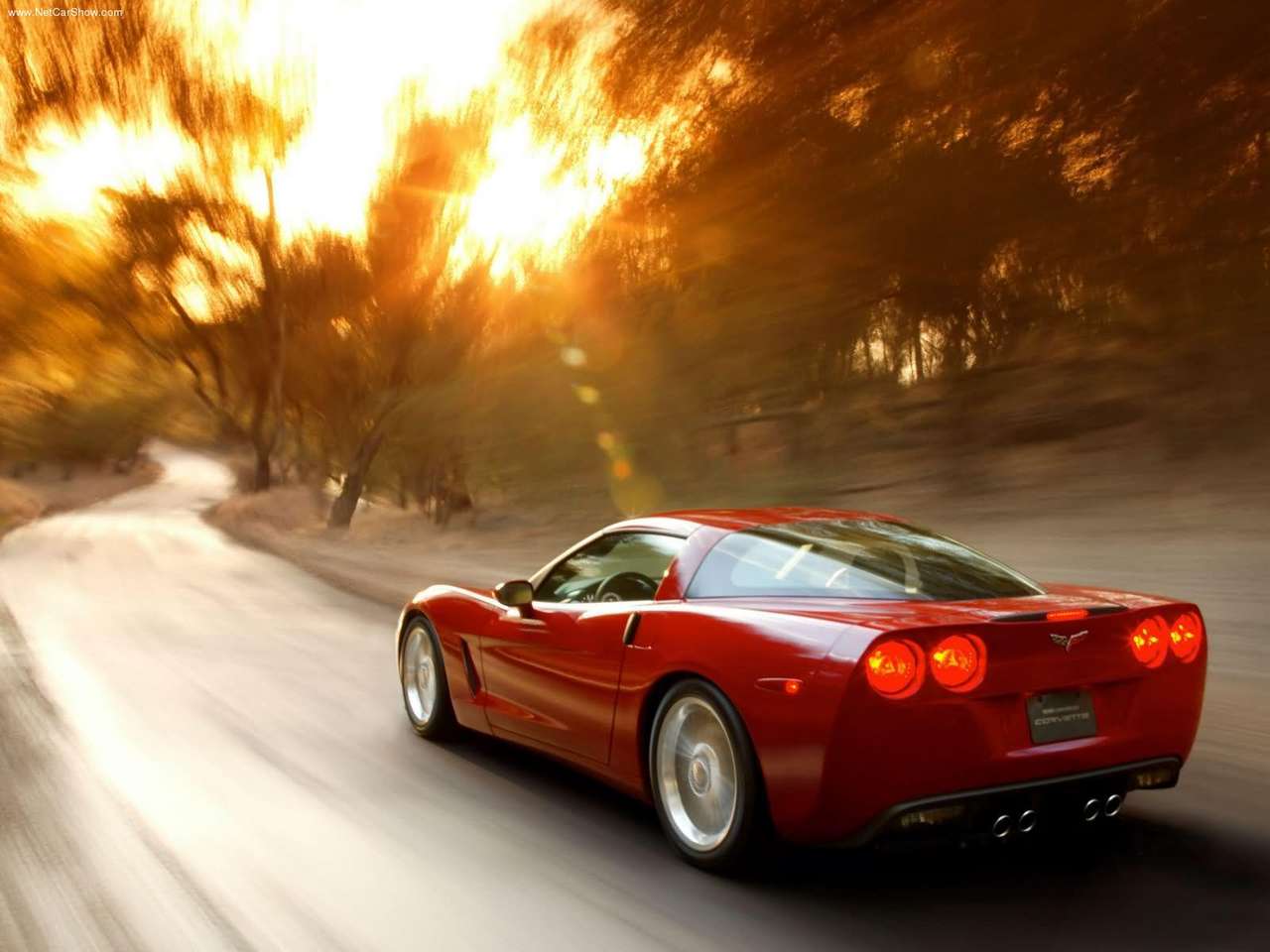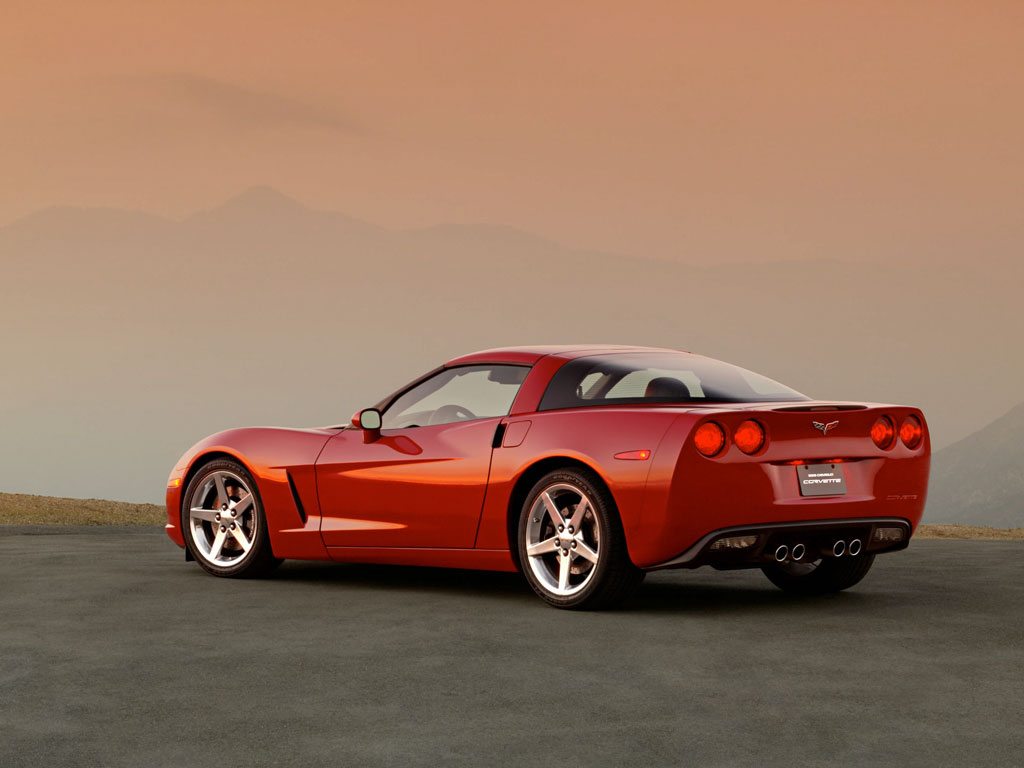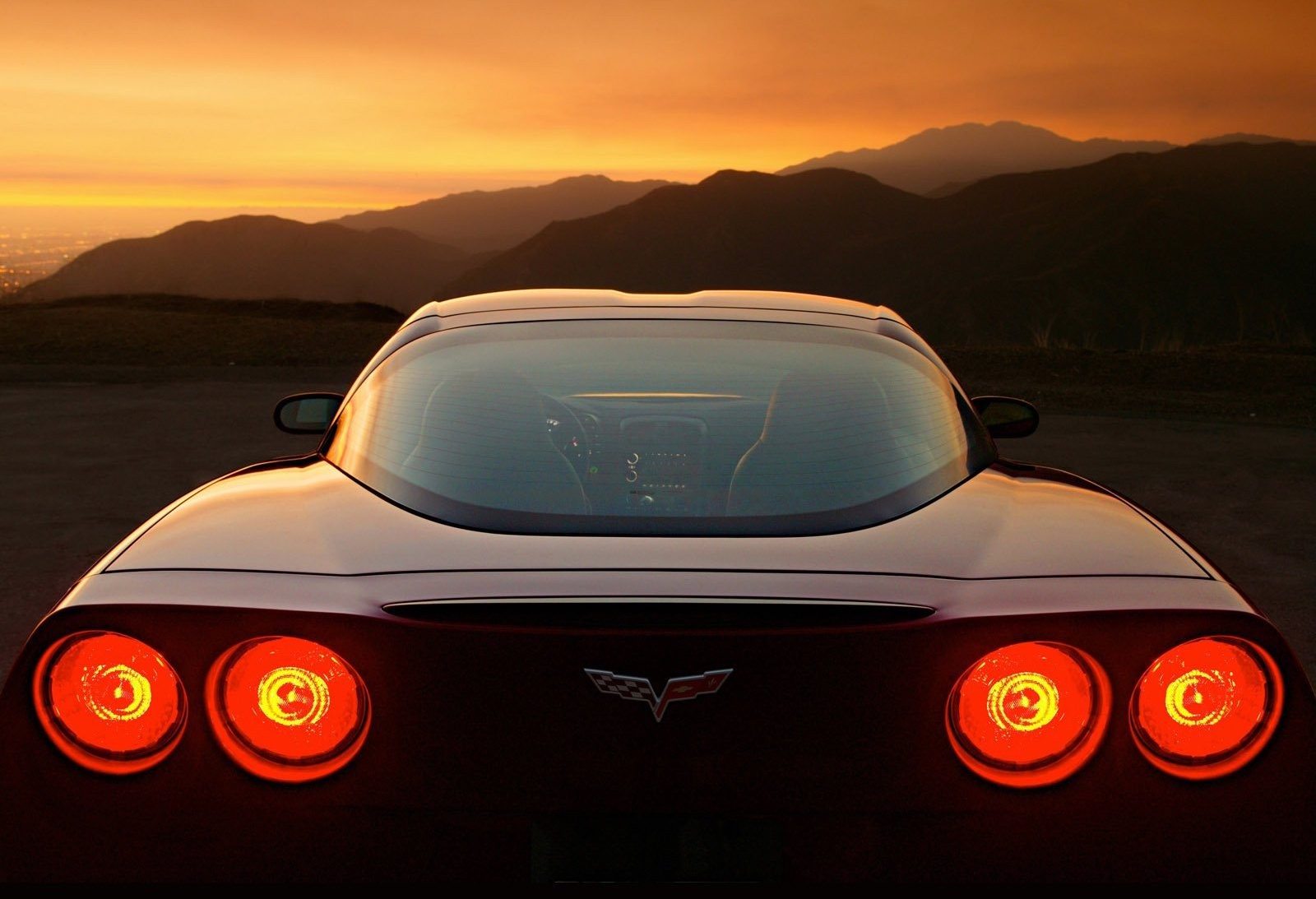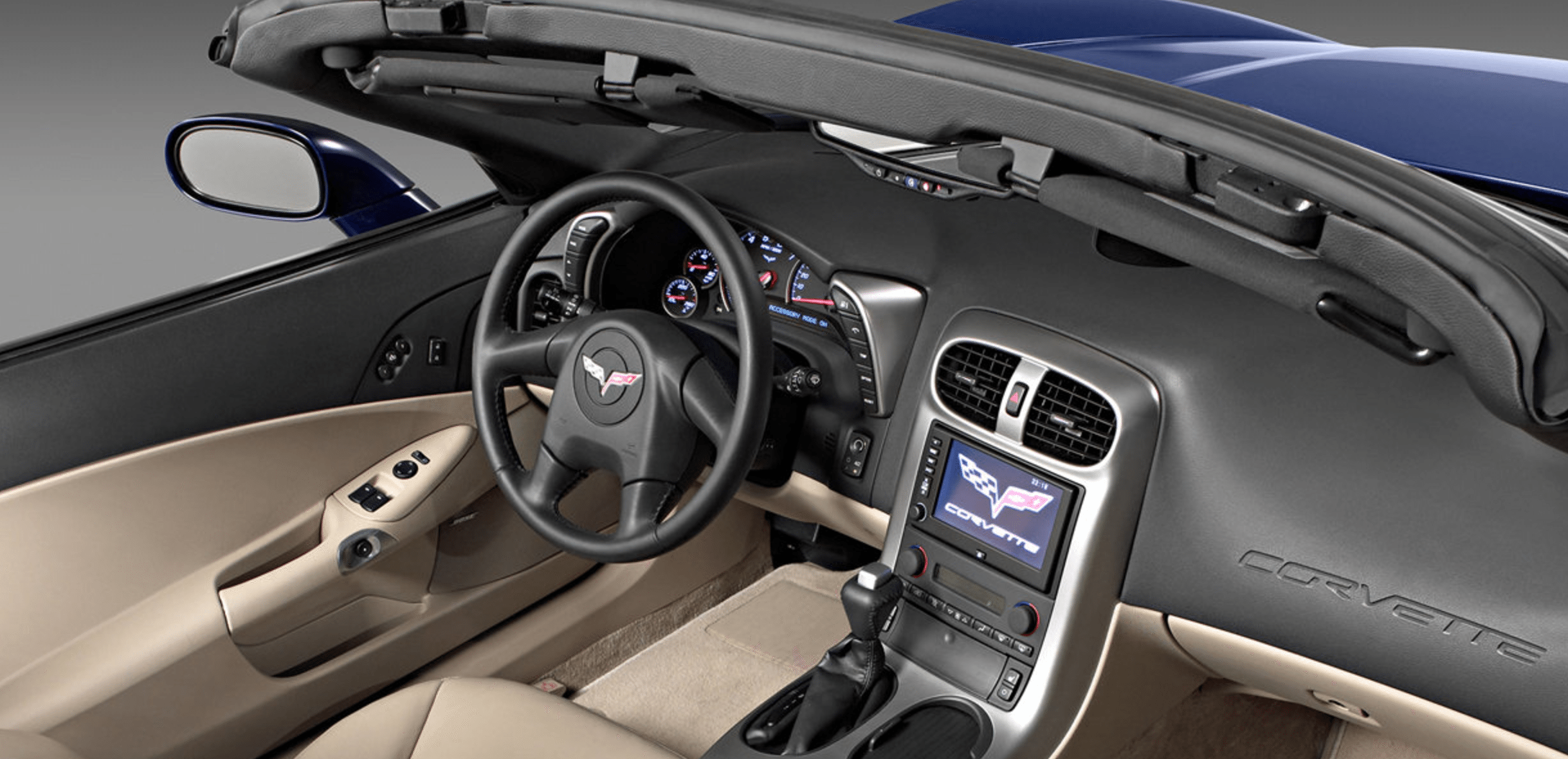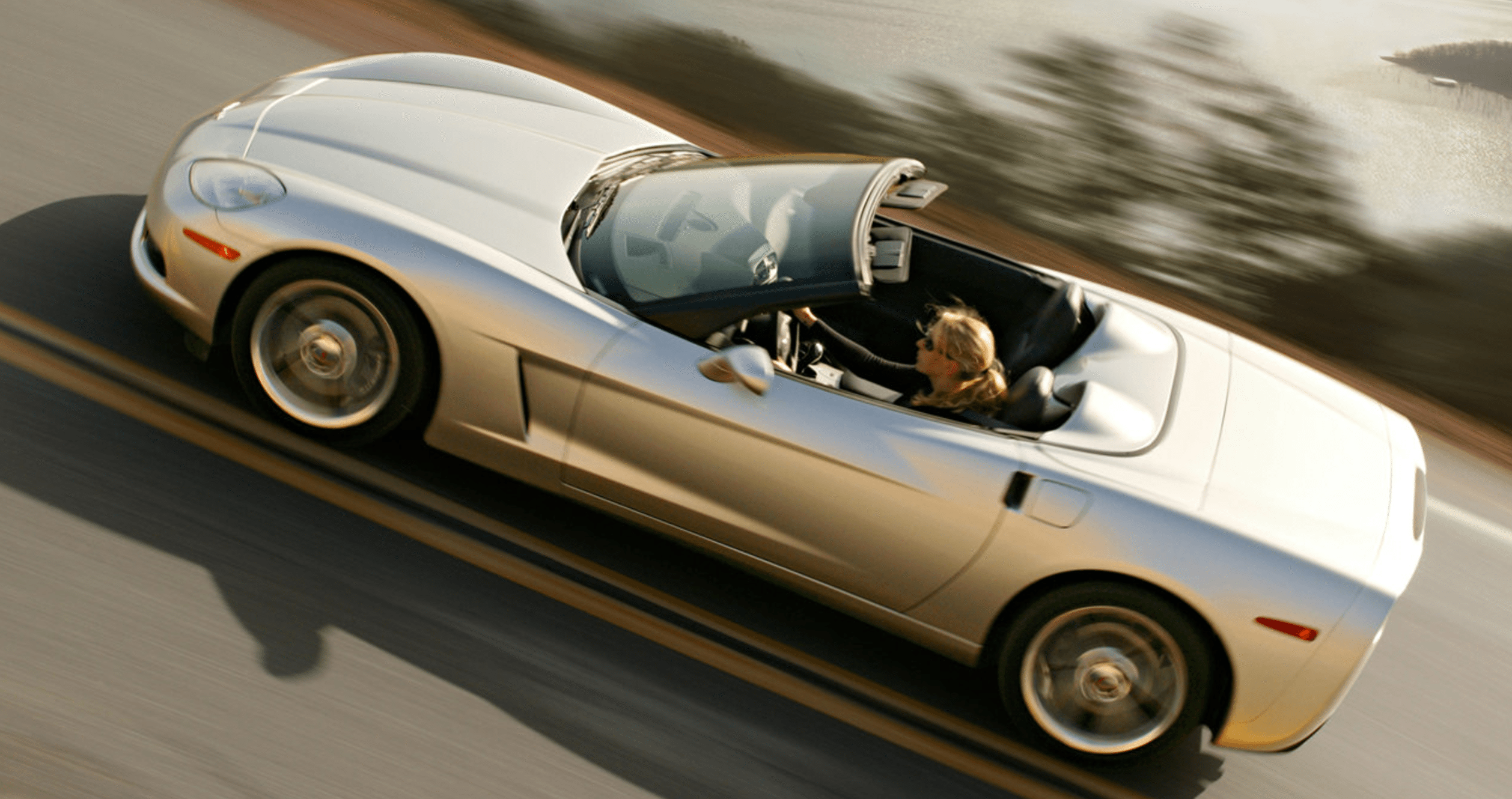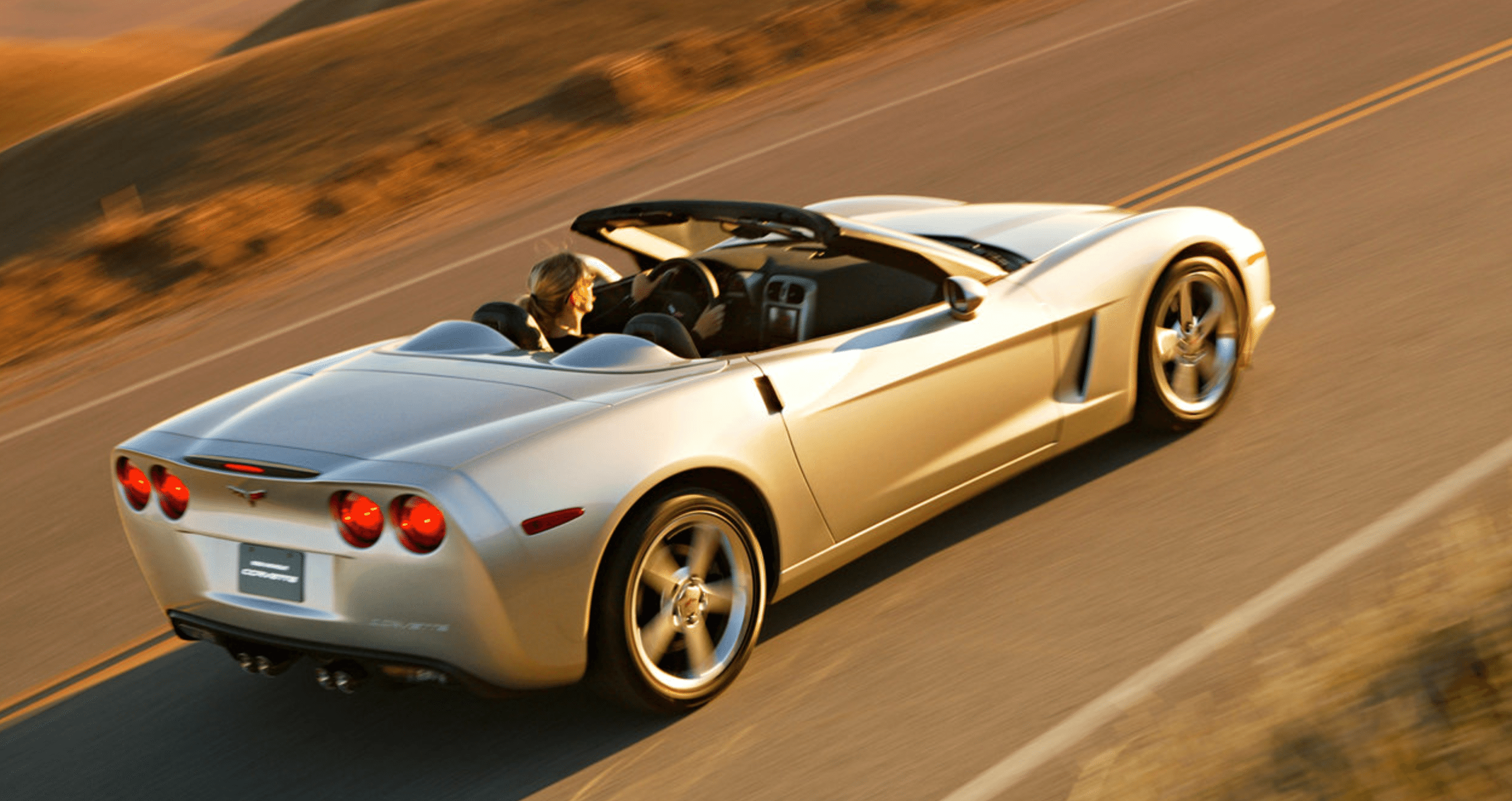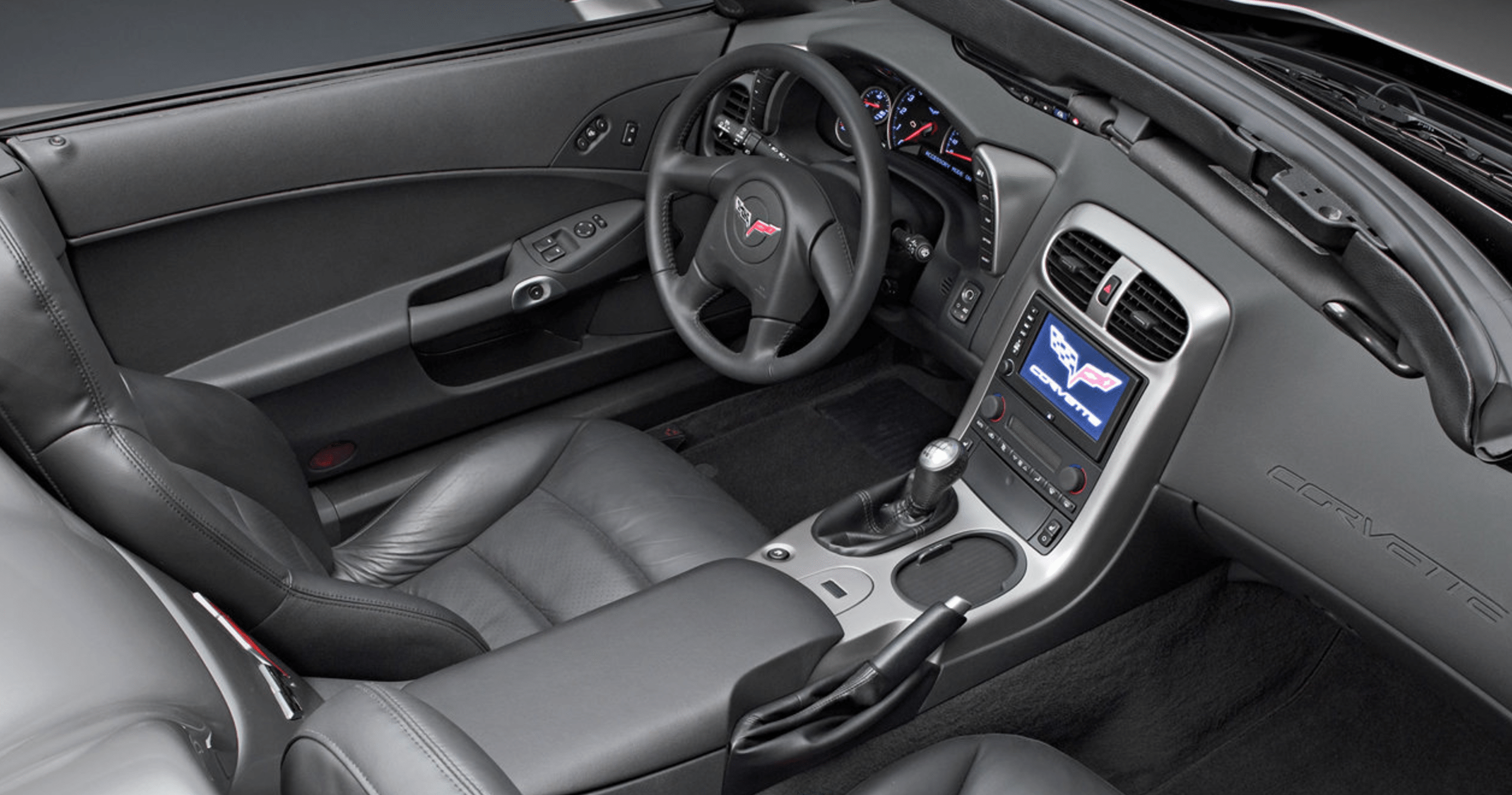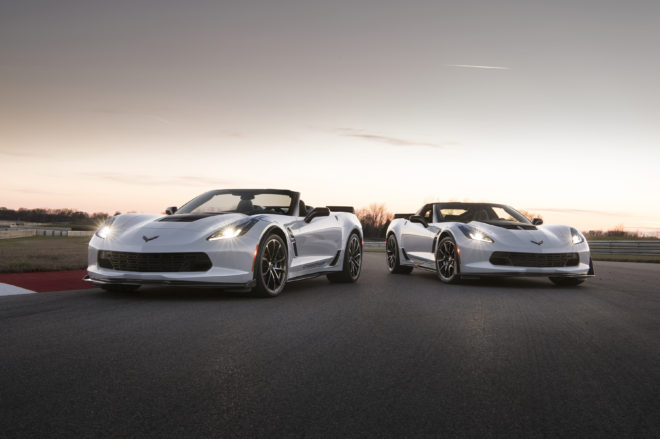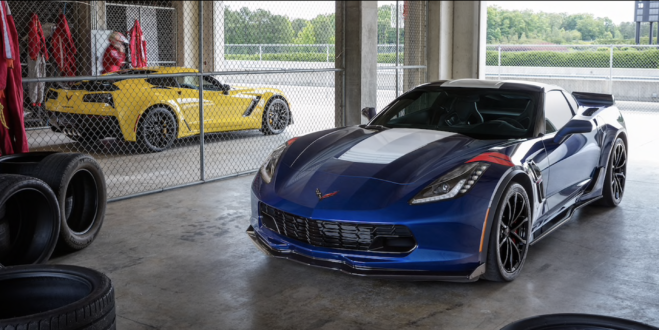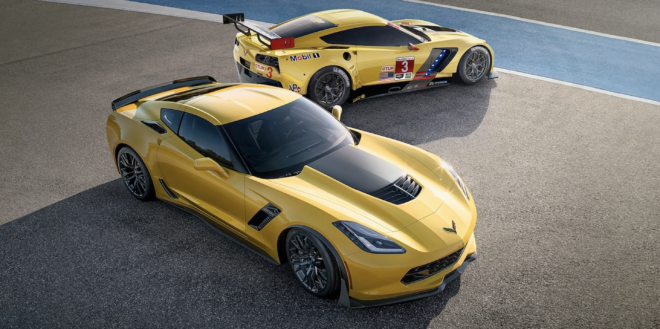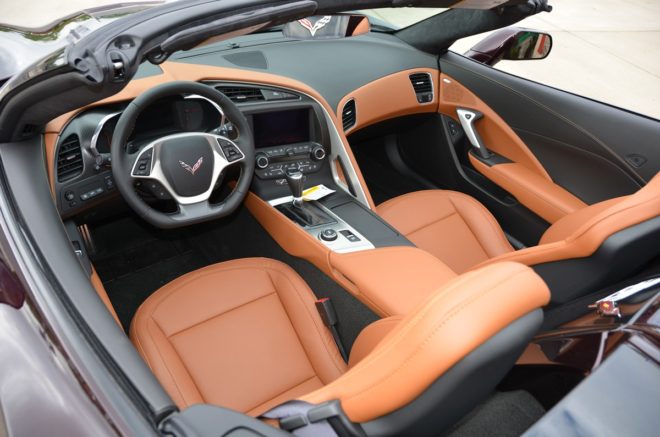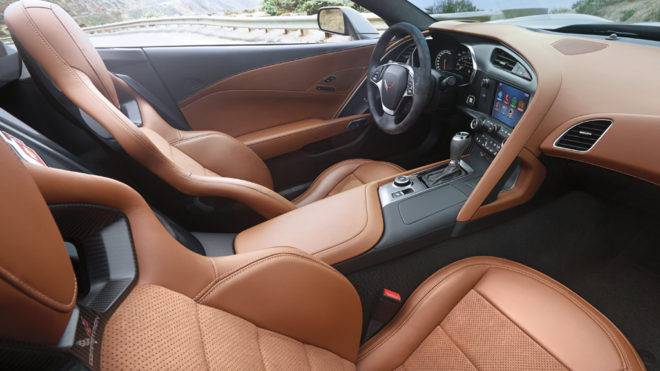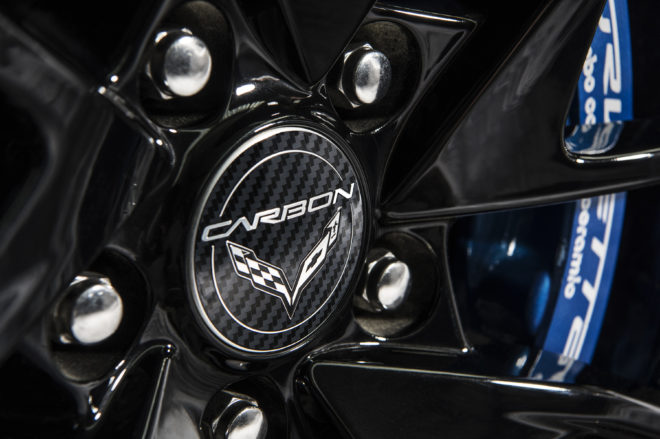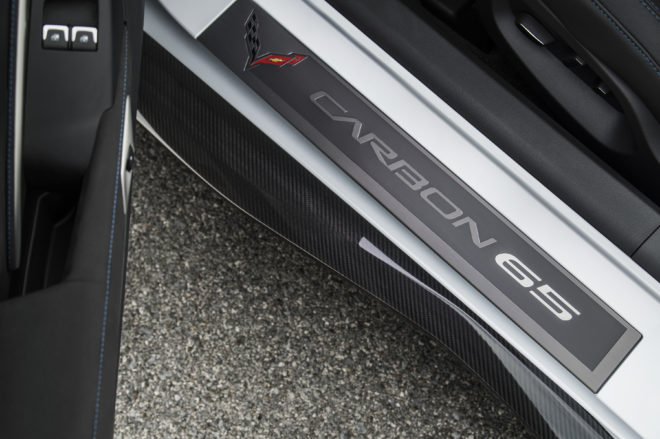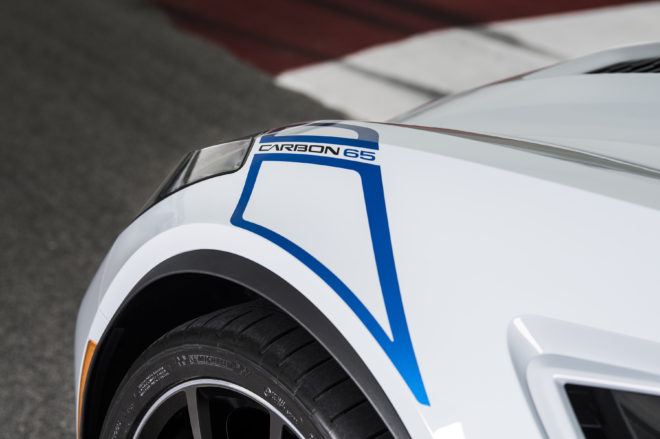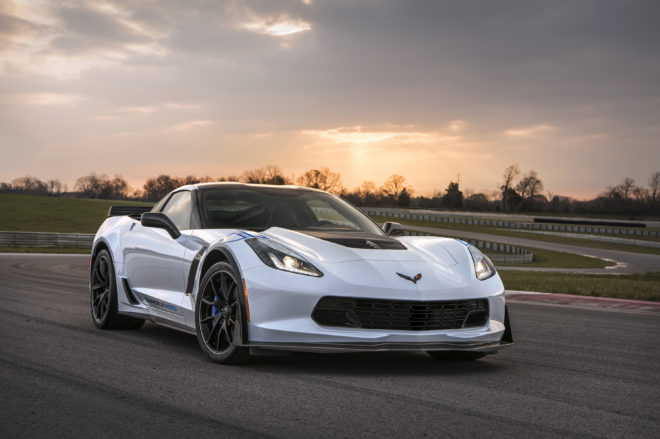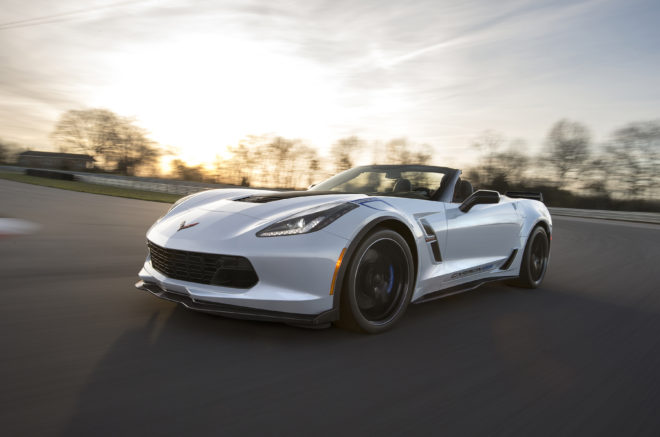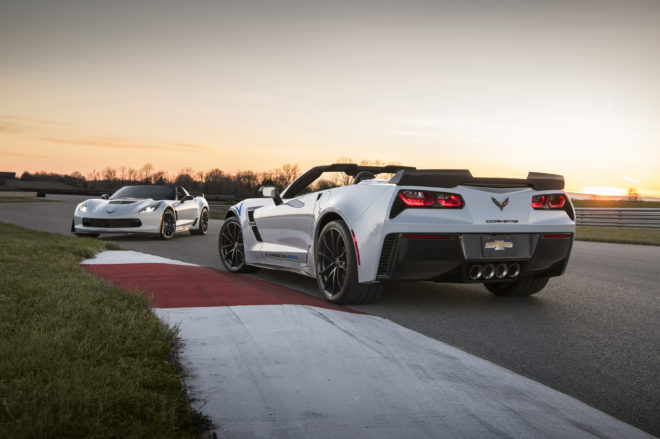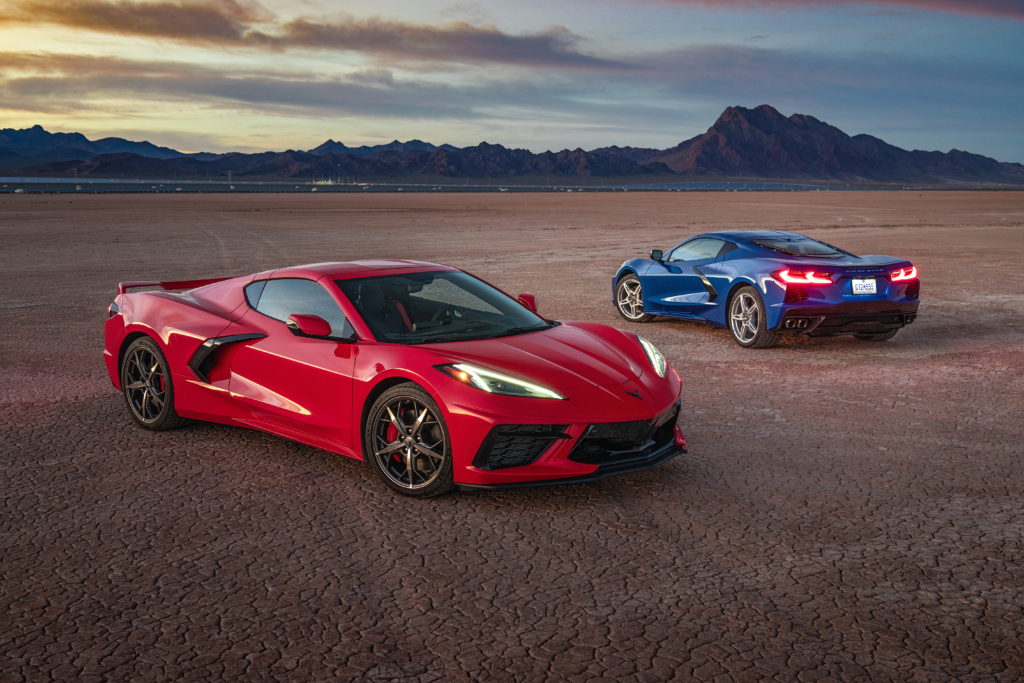
Pricing: $59,995 (Coupe), $67,495 (Convertible)
Performance highlights:
- Horsepower: 495 hp
- Max Available Torque: 470 lb.-ft.
- 0-60 mph: 2.9 seconds
- Top Speed: 194 mph
The Next Level of Corvette
Years of concepts and evolution have resulted in a Corvette that is the sum of every generation before it – yet it stands alone.
Front Lift is an available feature that raises the front nearly two inches to clear speed bumps and steep approaches. You can store up to 1,000 locations using GPS, so it operates automatically. LED headlamps provide a distinguished light signature and powerful illumination. The front trunk mid-engine design provides room for a standard airline carry-on bag. The driver sits more than 16 inches farther forward for improved visibility. You see more of the road and feel connected to the drive. An advanced, all new mid-engine architecture provides better seating position, visibility, driving dynamics and optimized storage utility. The efficiency of the mid-engine rear trunk design yields a large trunk – big enough for two golf bags. It also stores the removable roof panel. The wheels are larger standard, and Brembo brakes help cornering and braking.
While the 107-inch wheelbase is similar, the 2020 Corvette Stingray is two inches wider and slightly lower than the 2019 model year. These changes ensure a perfect fit for the powertrain, handling, acceleration and braking – and improve forward visibility.
With the mid-engine design, there is more weight toward the rear of the vehicle. The engine and transmission combination located at the rear will provide better traction and make sure that Stingray will have more responsive launch and acceleration.
Transmission: Corvette will offer an 8-speed Dual Clutch Transmission which provides lightning fast shifts and excellent power transfer. Paddle shifters allow drivers to choose the preferred gear and provide more engagement for those that want more control. There’s no compromise – just quick, accurate shifting performance.
Impressive Power, Exceptional Refinement
At the heart of Corvette is a new 6.2L engine. The design is optimized for the new mid-engine architecture – meaning it’s mounted lower and it’s more compact – it’s the jewel in the center. Above all, it’s powerful; in fact, this is the most powerful Stingray to date.
Highlights and Specs: 6.2L V8-LT2, 495 horsepower @ 6450, 470 lb.-ft. of torque @ 5150 (with performance exhaust), and 0-60 MPH in under 3 seconds.
The highly visible cover of the intake manifold has been completely redesigned with a 3D-like appearance that includes a Corvette insignia into each side with a crossed flags emblem. The exhaust manifolds on the LT2 are performance stainless steel headers – 4 to 1 twisted runner and tapered collectors.
The LT2 engine includes standard Dry Stump Oil system that collects oil outside of the engine rather than in the oil pan. It sends that oil to lubricate the engine to ensure the engine can withstand all types of driving – even at lateral acceleration levels exceeding 1G in all directions.
The engine block of the LT2 has been redesigned and is made of aluminum. The block is smaller than previous generations and is very compact. Another change was to the Active Fuel Management system that now will run cylinders 1-7-6-4 while in 4-cylinder mode compared to 8-2-5-3 from the LT1 engine in the previous generation Corvette.
Interior themes: Jet Black, Sky Cool Gray, Adrenaline Red, Natural/Natural Dipped, Two-Tone Blue and Morello Red. In addition to the interior themes, customers will also be able to choose their seat belt color. The colors that will be offered include: Black, Blue, Natural, Torch Red, Yellow and Orange. With the most options ever for Corvette, interior customization options allow the customer to create their own design statement.
Available colors: Arctic White, Black, Torch Red, Blade Silver Metallic, Ceramic Matrix Gray Metallic, Elkhart Lake Blue Metallic, Shadow Grey Metallic, Zeus Bronze Metallic, Accelerate Yellow Metallic, Rapid Blue. Long Beach Red Metallic Tintcoat, Sebring Orange Tintcoat
Driver-Centric Interior Design
The moment the driver sits in the cockpit, everything is perfectly positioned to perform. With the mid-engine architecture, designers were able to completely rethink the interior of the Corvette Stingray – putting the driver first and in complete control.
The race car-inspired steering wheel has a square design that provides a clear view of the gauges and more leg and knee room for the driver. Industry-First Ultra-Thin Vents create a minimalist design, and no visible veins provides a clean appearance and helps keep the instrument panel low. The controls help keep the instrument panel low, for better downward vision and improved sightlines. An additional inch of seat travel from the previous generation offers taller individuals more comfort. The seat recline angle is now almost double (17°vs. 9°) than the previous generation. With the seats over 16 inches farther forward than those of the previous generation, forward visibility has improved greatly.
Corvette Stingray presents a cockpit-style theme. The cockpit creates a new experience for the driver and gives them more control. This theme takes it to the next level with the cockpit wrapping around each occupant. The craftsmanship is in a class by itself, with almost all hand-wrapped interior parts that are stitched with authentic materials used for the decorative trim.
Between the seats of the Corvette Stingray is a new waterfall extension, which has been a classic cue since early generations. Models with Bose Performance Series Audio now incorporate an aluminum speaker grille with a ghosted Crossed Flags emblem. Meticulously designed, the resized speaker hole pattern creates the iconic silhouette and sets the interior apart from other generations.
Other highlights of this year:
- Three performance seating options
- The standard GT1 seats feature a sports car design yet emphasize comfort with Mulan leather. They are flatter on the seatback and cushion, providing good support for varied driving conditions. On 2LT, GT1 seats have two-way lumbar, plus wing adjustments for premium support where needed. 2LT seats also include heating and ventilation for the perfect temperature in all types of climates.
- The Corvette-first GT2 seats epitomize style and comfort, featuring a racing-inspired look and more curvature, courtesy of dual density foam. They include carbon fiber trim, a Napa leather insert, Mulan leather bolsters, jet-black painted seatbacks, decorative finish around the headrest, two-way lumbar support and wing adjustments, plus heating and ventilation. These seats stand apart for those who want to raise the interior bar.
- Competition Sport Seats are available on 1LT, 2LT, and 3LT. These seats are designed for the serious track-focused driver, these seats include aggressive bolsters, full Napa leather seating surfaces, carbon-fiber trim on the headrests, and all-new durable performance textile inspired by Kevlar vests. 2LT and 3LT include two-way lumbar, wing adjustments, heating and ventilation for comfort and support. These seats are the premier choice for track aficionados.
- In the most advanced infotainment system ever for Corvette, the Chevrolet Infotainment System 3 offers owners easier access to their content, more ways to connect to their devices and an advanced Performance Data Recorder to record their drive. The Infotainment 3 features cloud-connectivity for real-time data, plus new Near Field Communication Bluetooth pairing. The Performance Data Recorder offers Track, Sport, Performance and Tour screens plus dash camera operation adds smart capabilities to Corvette’s infotainment system
- When drivers need to pull into a steep driveway or drive over a speed bump, Corvette Stingray now has an available option called Front Lift to raise the front end approximately 2 inches to avoid potential damage to the lower fascia.
- Along with an all-new, under-skin structure, a new suite of available active safety features grants customers peace of mind and confidence. Standard safety features include: Teen Driver and Valet Modes, Outside Rearview Mirror Signal Indicators, Rear Park Assist, Rear Vision Camera, Extended Mobility or Run-Flat Tires, and a Tire Pressure and Temperature Monitor.
- Corvette Stingray offers plenty of storage areas, so your belongings always have room to come along for the ride. The all-new mid-engine design on the 2020 Corvette Stingray created space for a trunk in the front, under the hood, for storage of items such as a standard airline carry-on luggage bag. Continuing the legacy of past Corvettes, the rear trunk has enough room to fit two sets of golf clubs, storage of the removable roof panel or even large luggage. There’s 12.6 cubic feet of combined storage for those who wish to travel with their gear.
Photos of the 2020 Corvette:
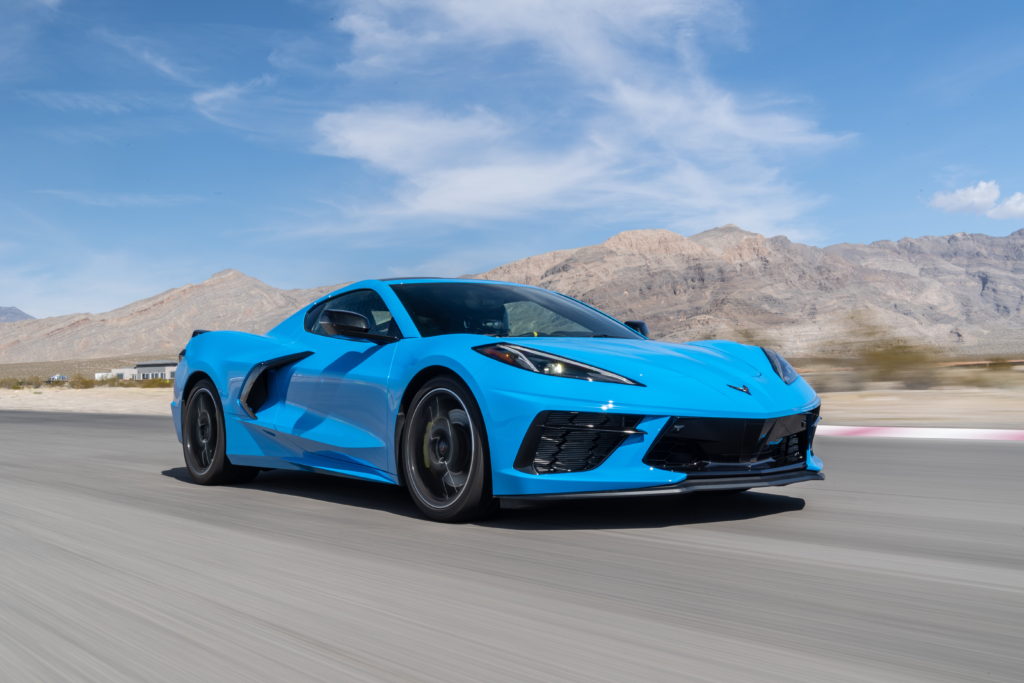
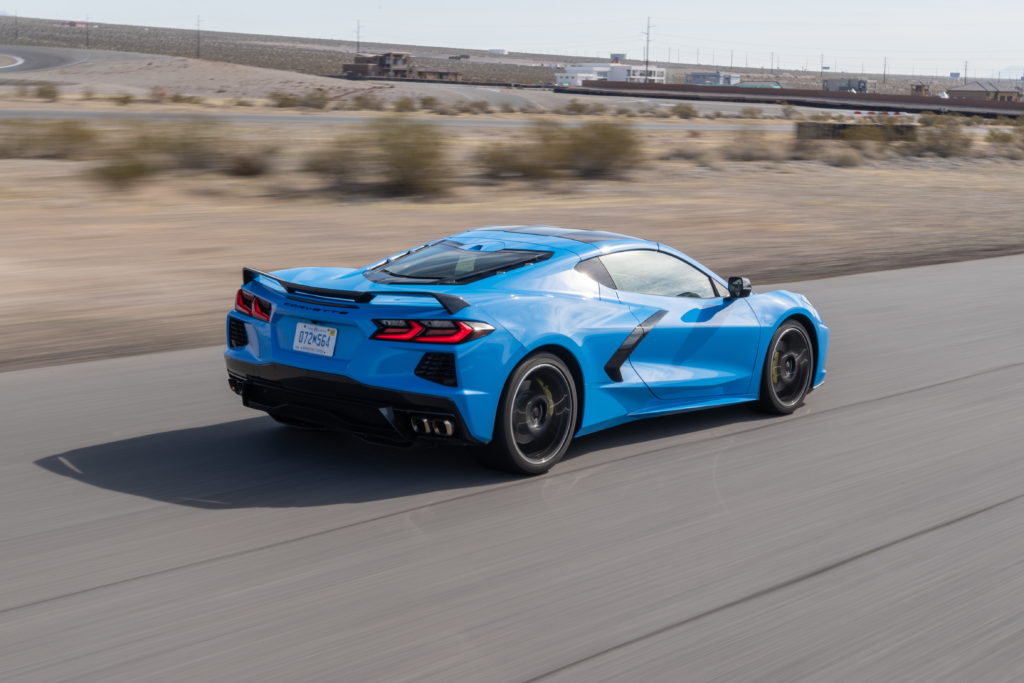
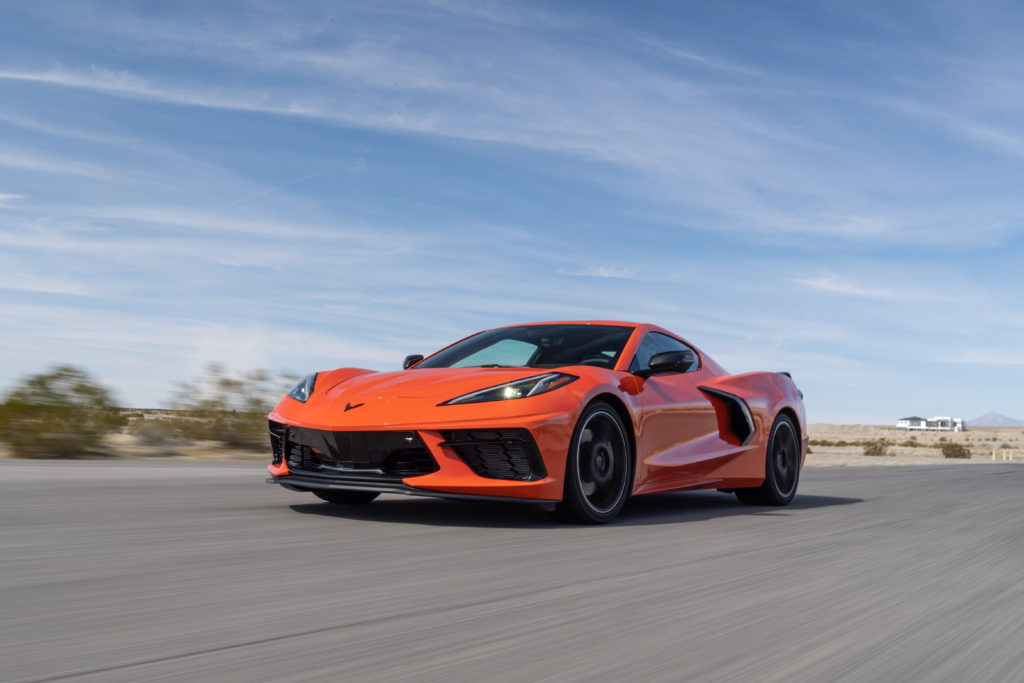
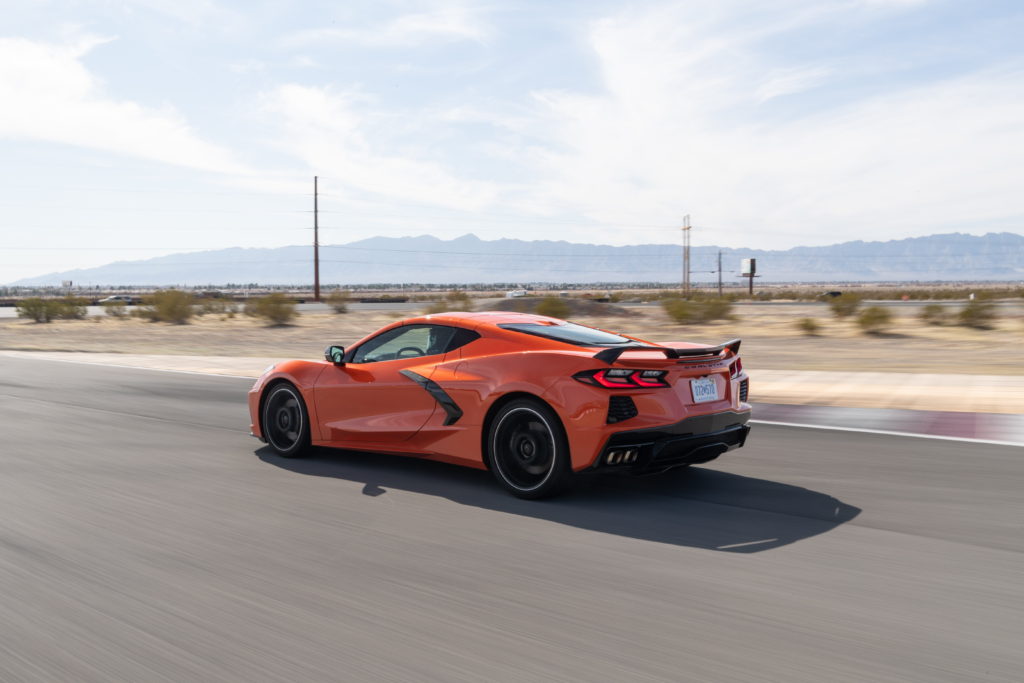
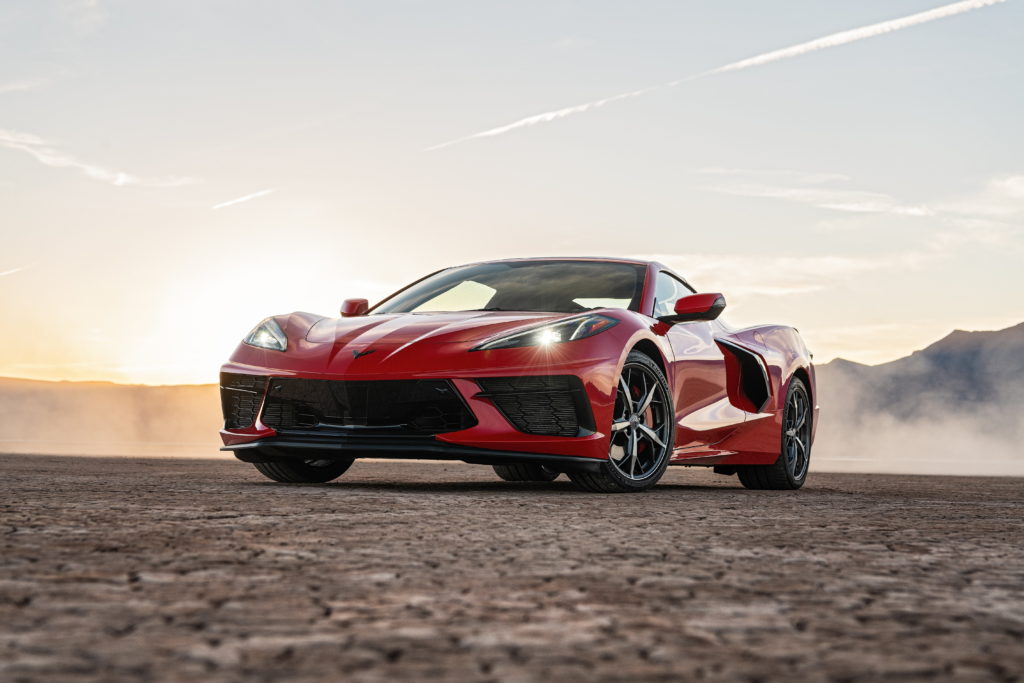
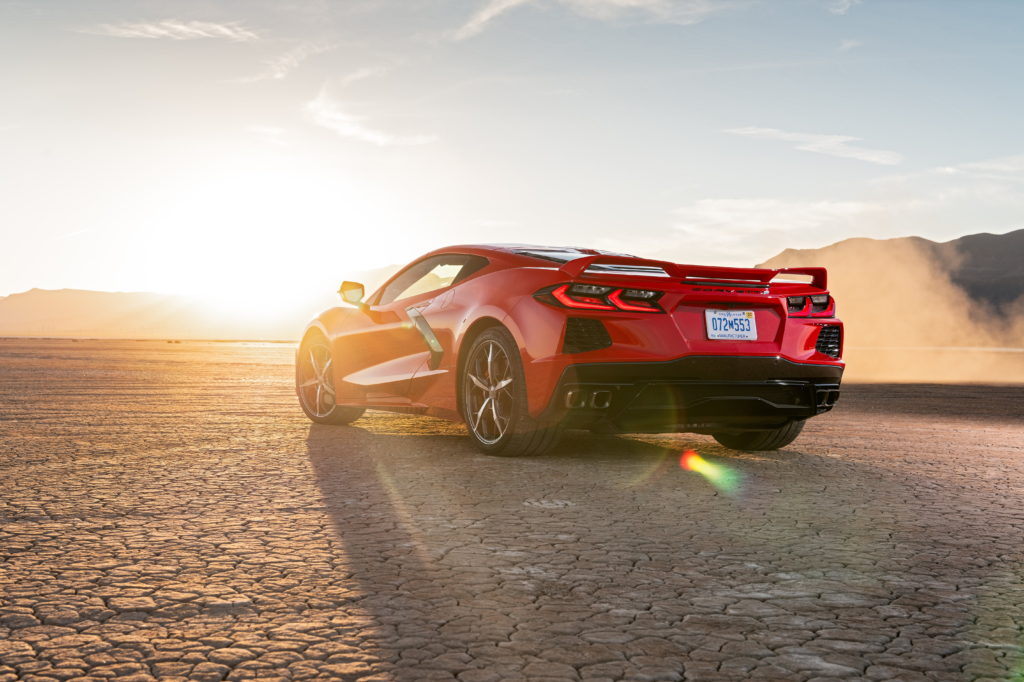
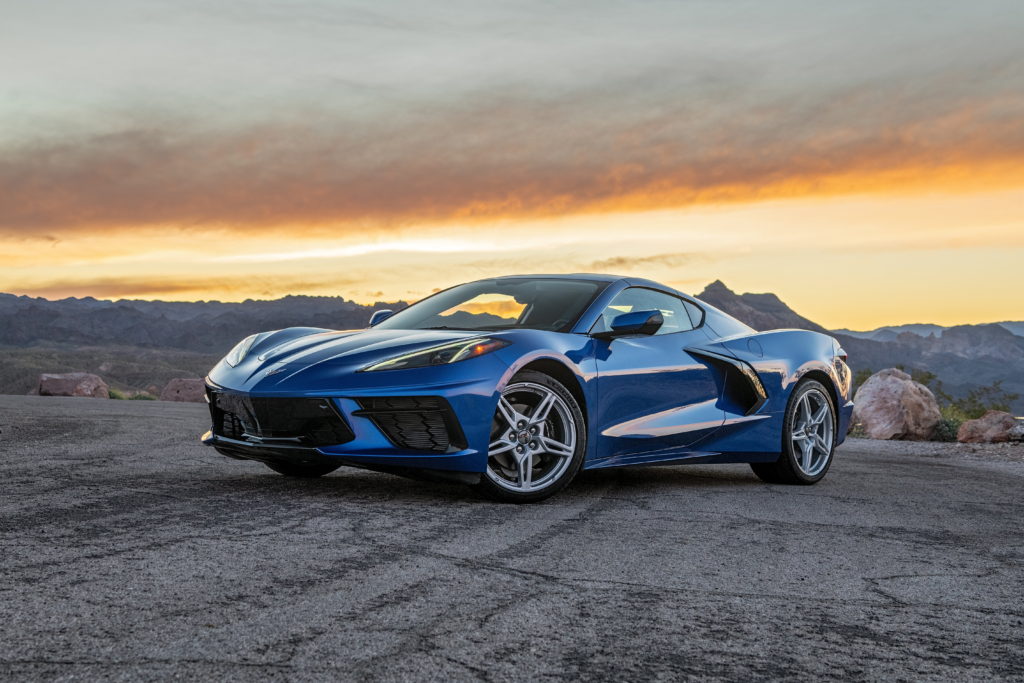
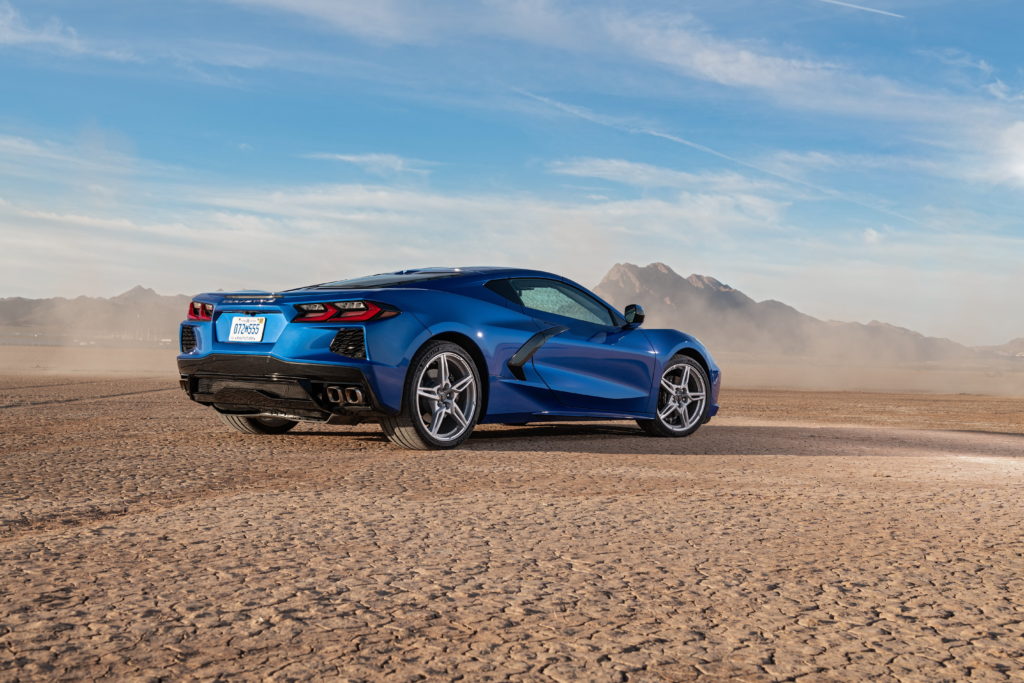
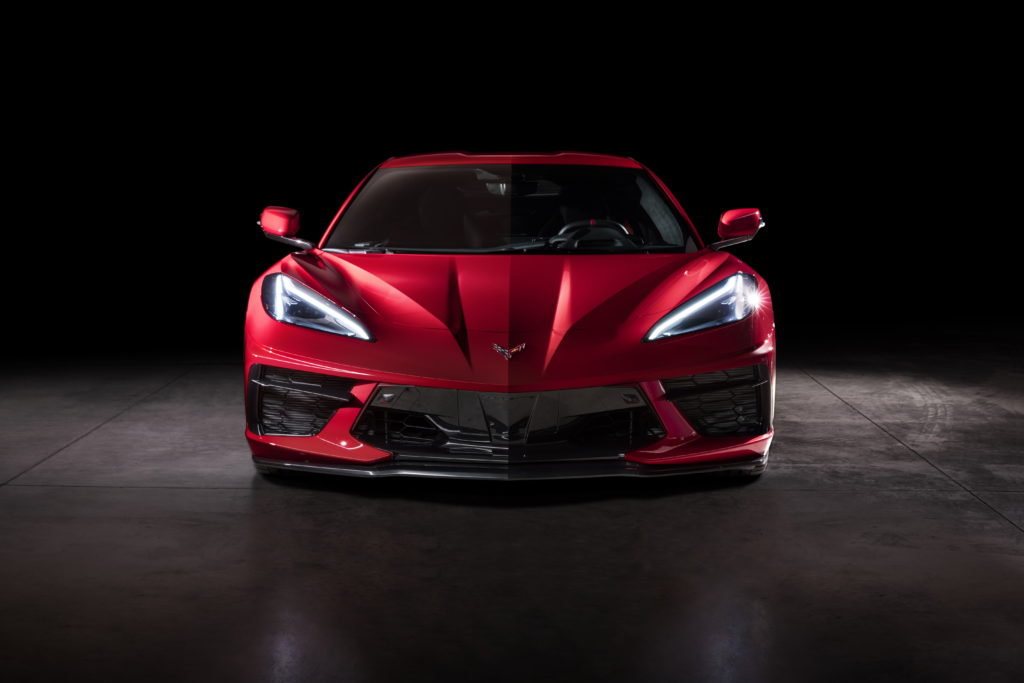
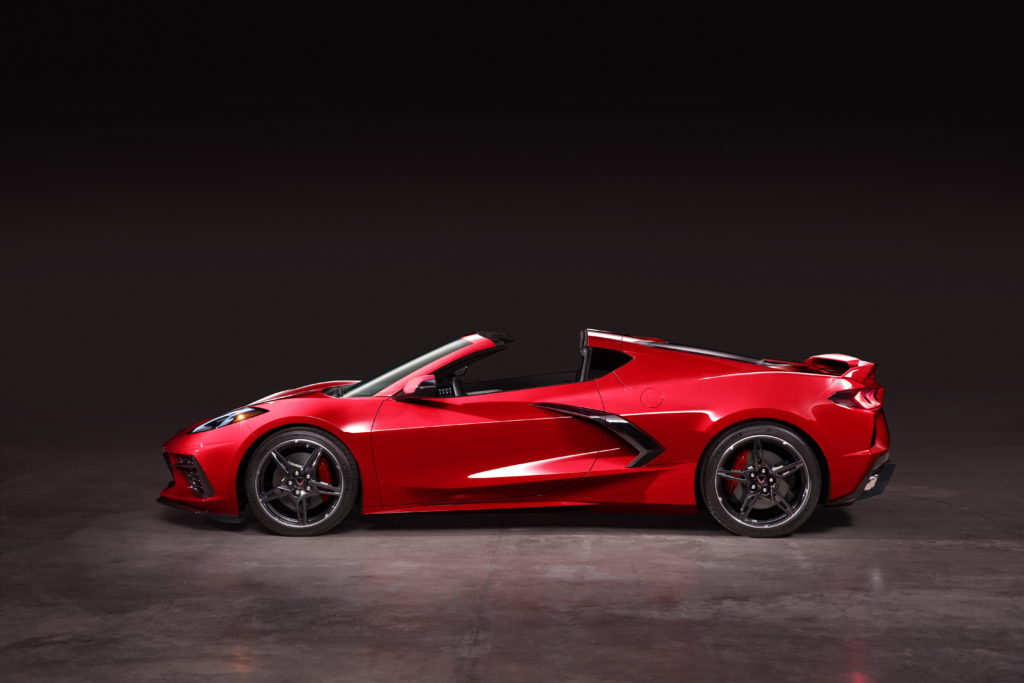
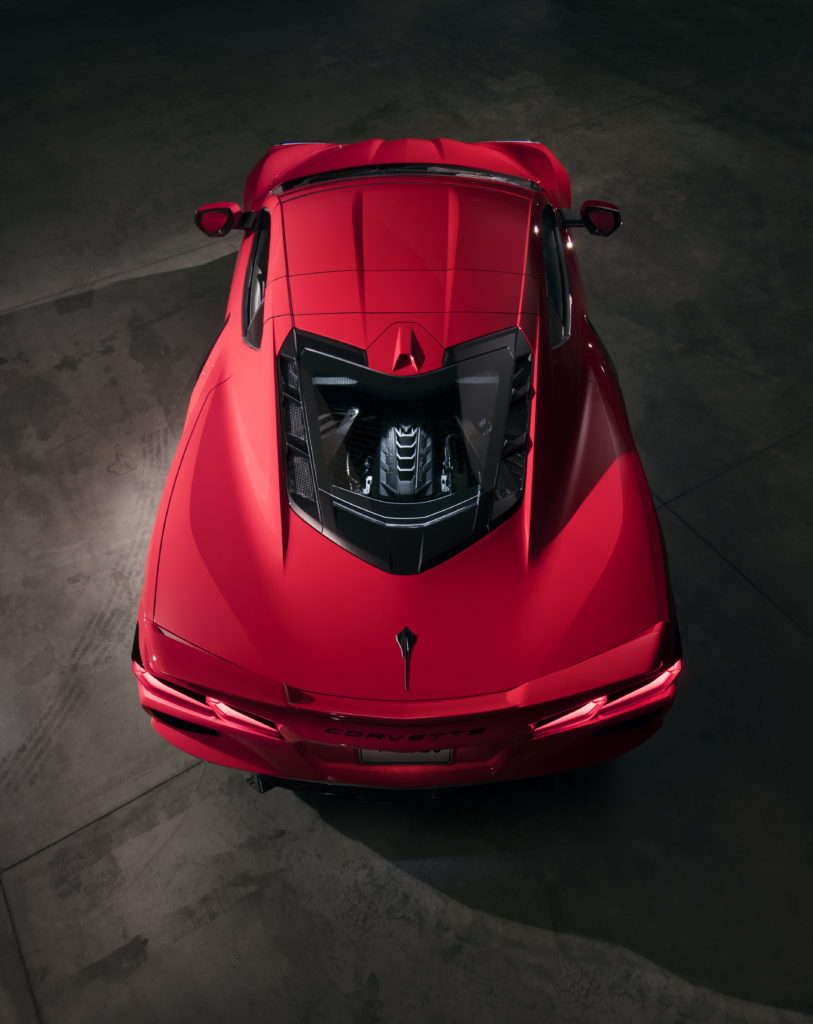
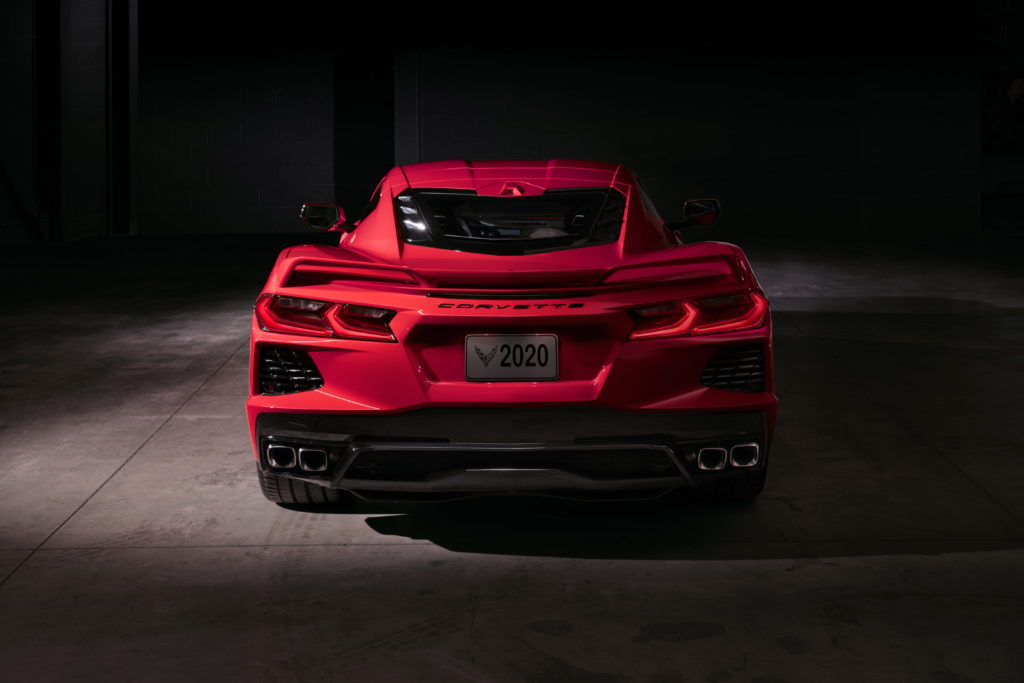
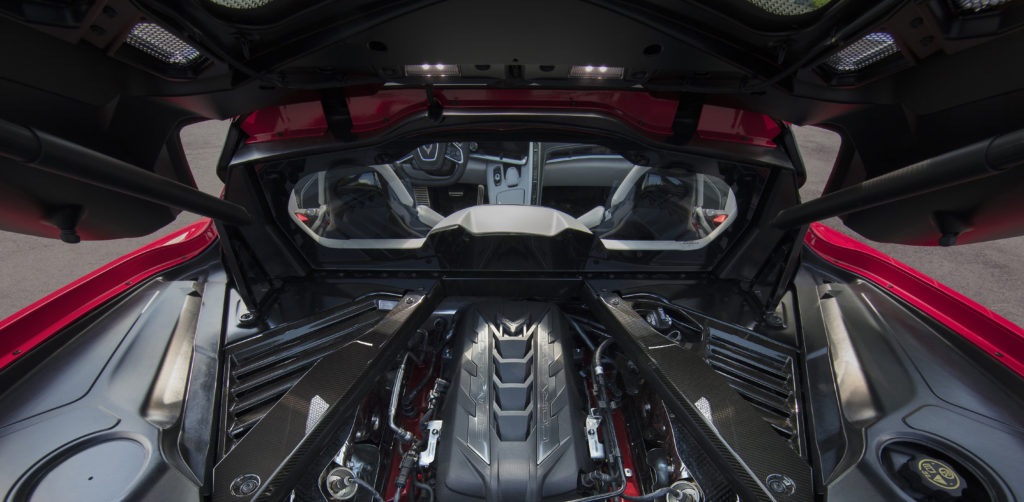
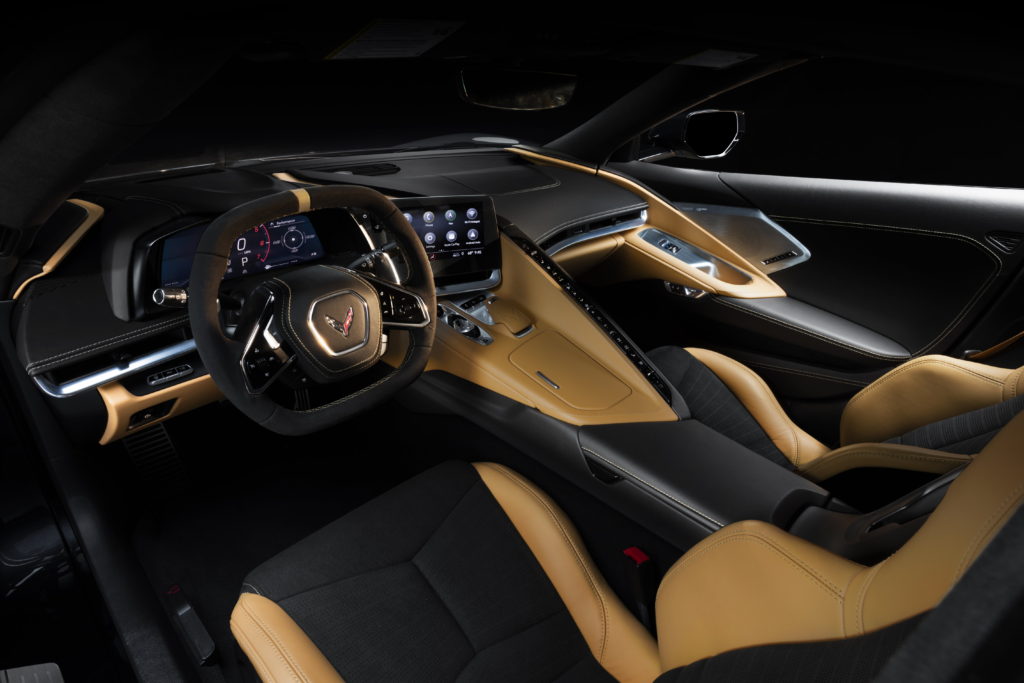
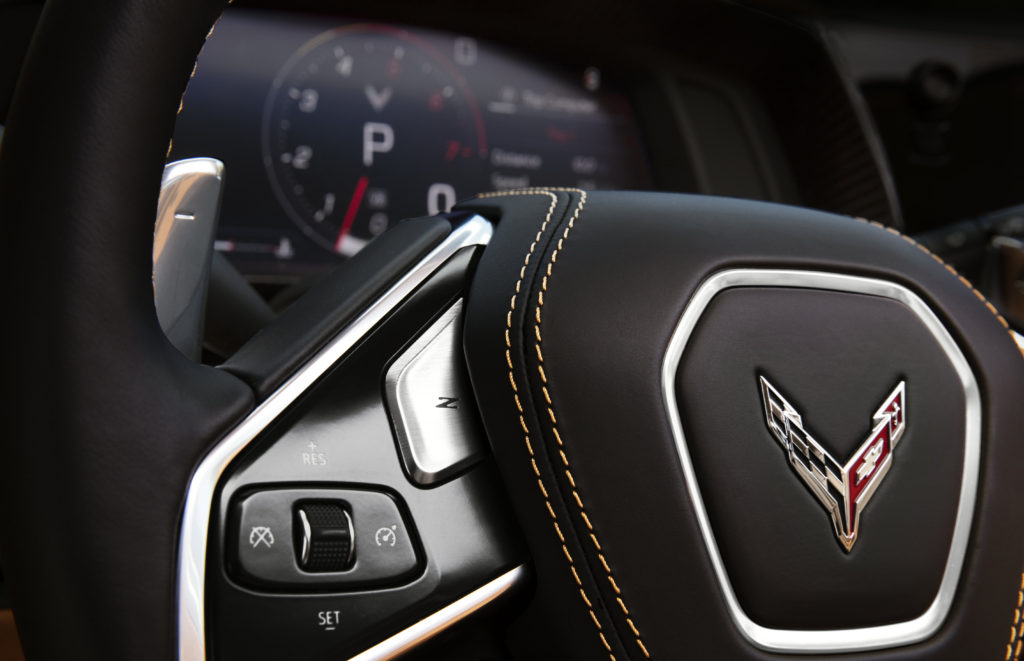
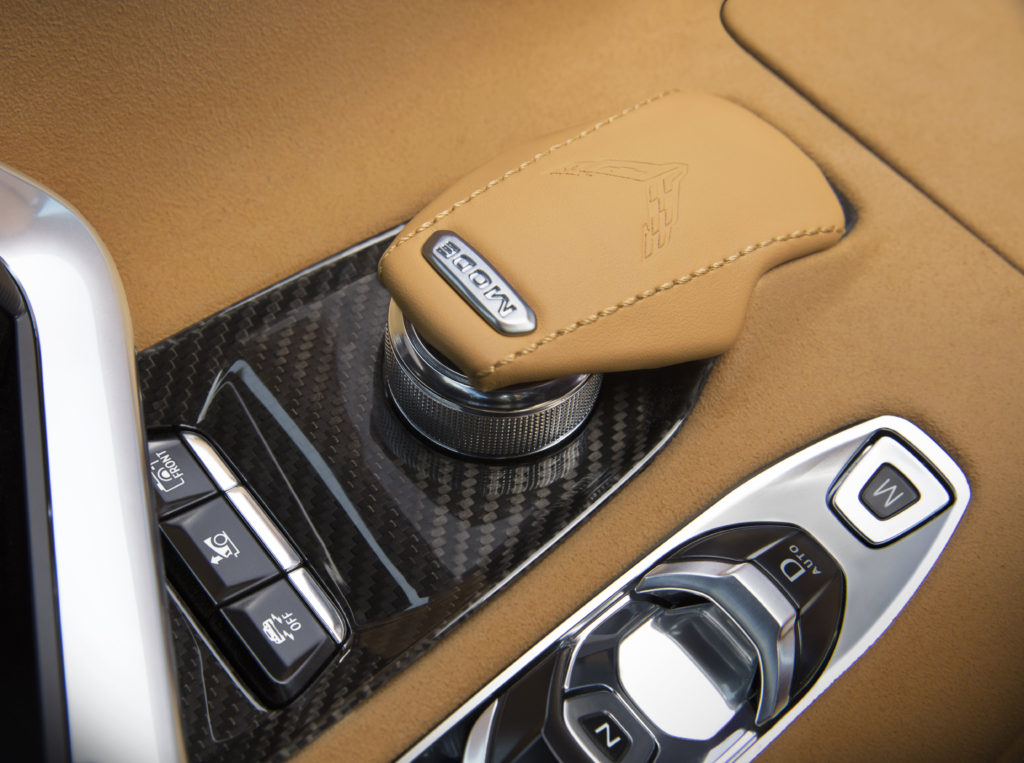
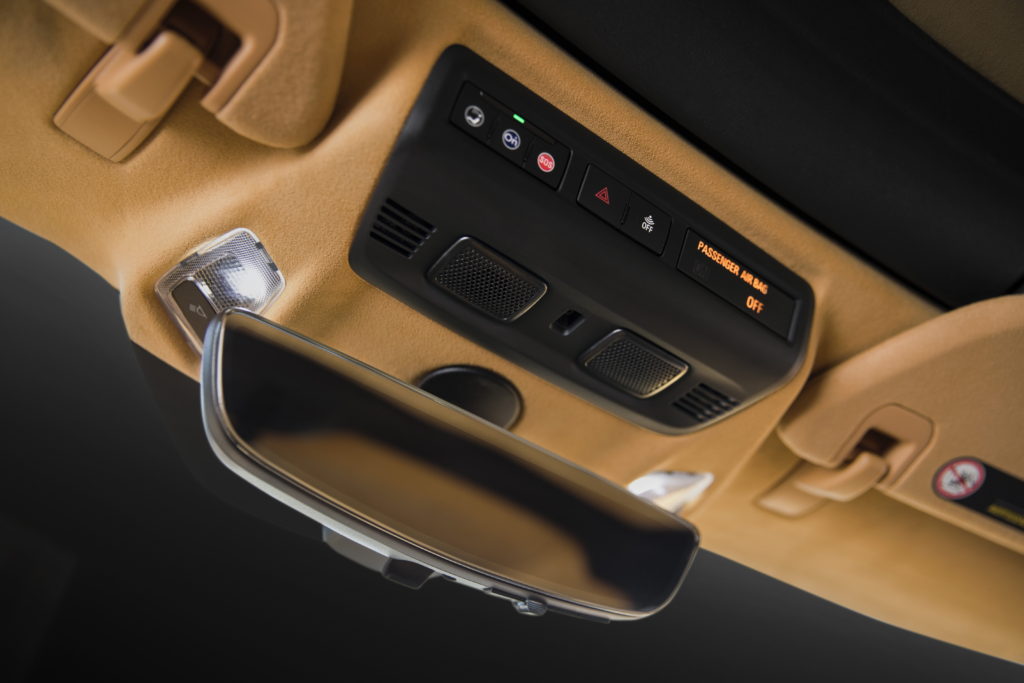
Sources
https://www.corvettemuseum.org/learn/about-corvette/corvette-specs/2020-corvette-specs/
https://media.chevrolet.com/media/us/en/chevrolet/vehicles/CorvetteGS/2020.html
https://www.chevrolet.com/performance/corvette
Author
David Harned // Editor

